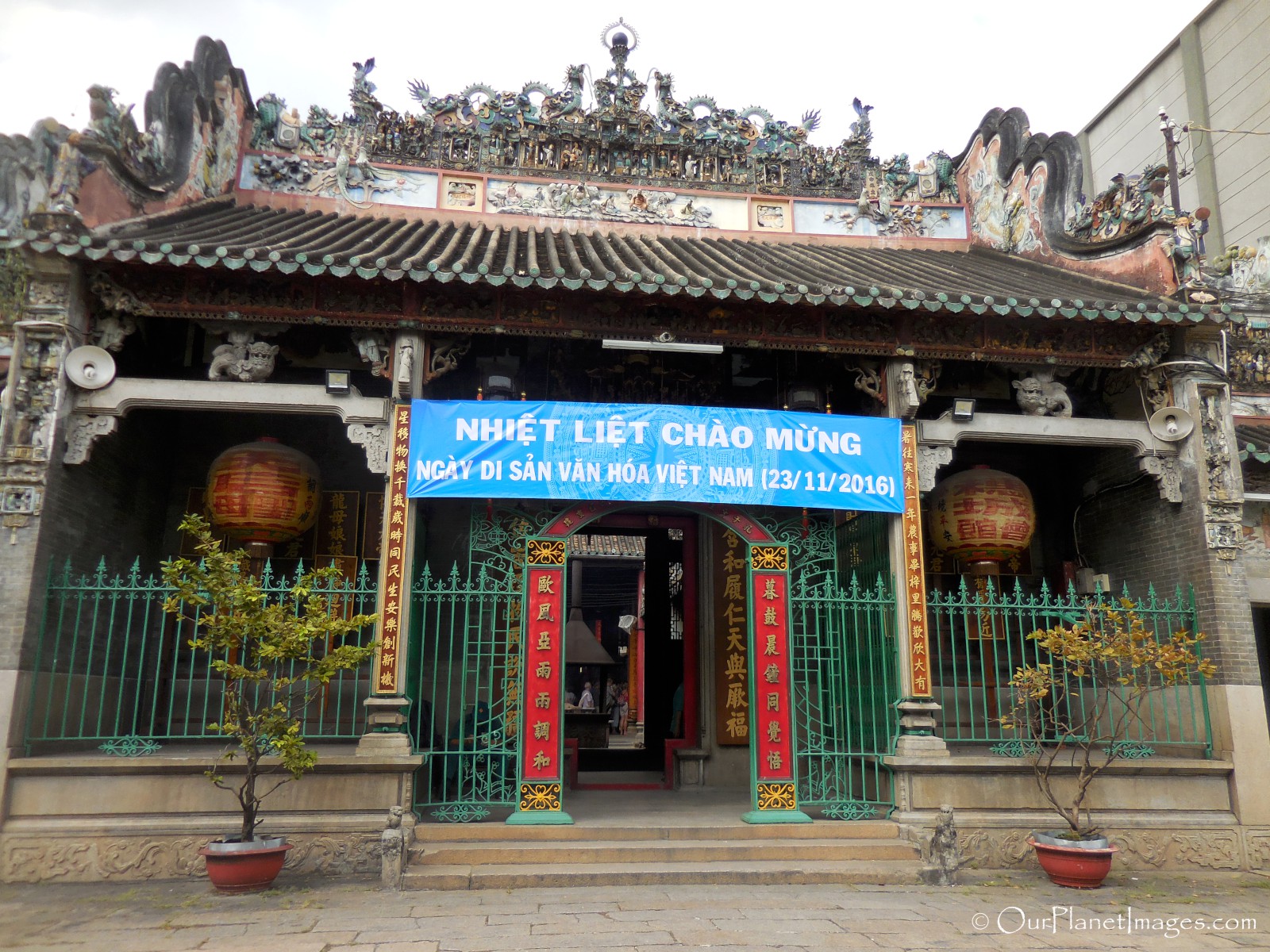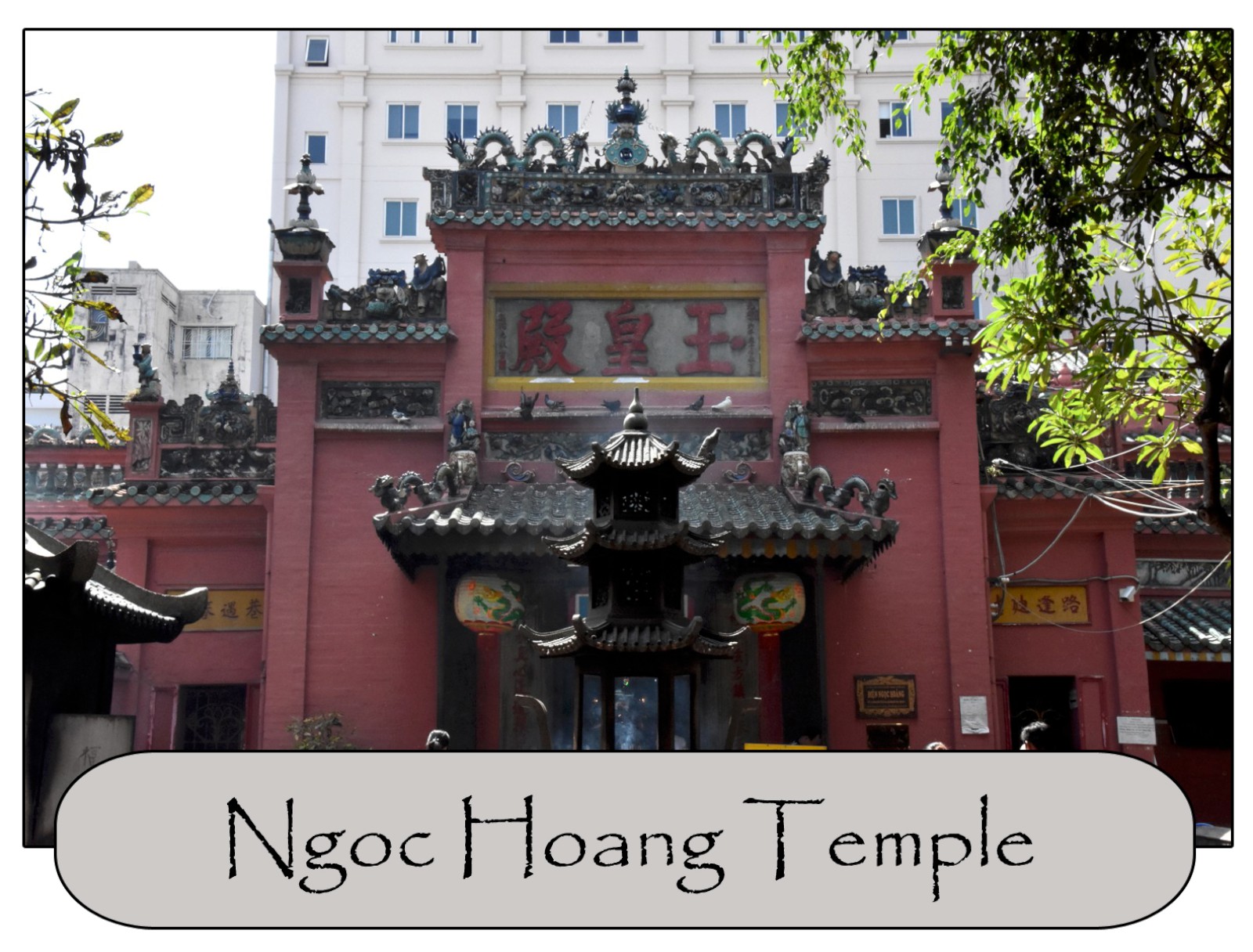Thien Hau Pagoda is a small temple with lots of fascinating features.
The Thien Hau Pagoda is a Taoist Temple that was built around 1760 by a group of Chinese immigrants in Ho Chi Minh City, Vietnam. The pagoda is one of the oldest of the Chinese community in the city and has been restored multiple times with the latest being in 1916.
The pagoda is dedicated to Thien Hau, the Lady of the Sea. She is a deity of traditional Chinese religion who is honored in the southern maritime provinces of China and other seafaring communities because they believe that she has the ability to rescue stranded seafarers and fishermen.
Thien Hau Pagoda Exterior
Not much of the pagoda’s exterior can be seen as there are other buildings that are alongside the pagoda. There is a small courtyard in front of the entrance and a small porch just inside the entrance gate. The most decorative portion of the exterior is the porch covering and the roof façade which are shown in the photos below.
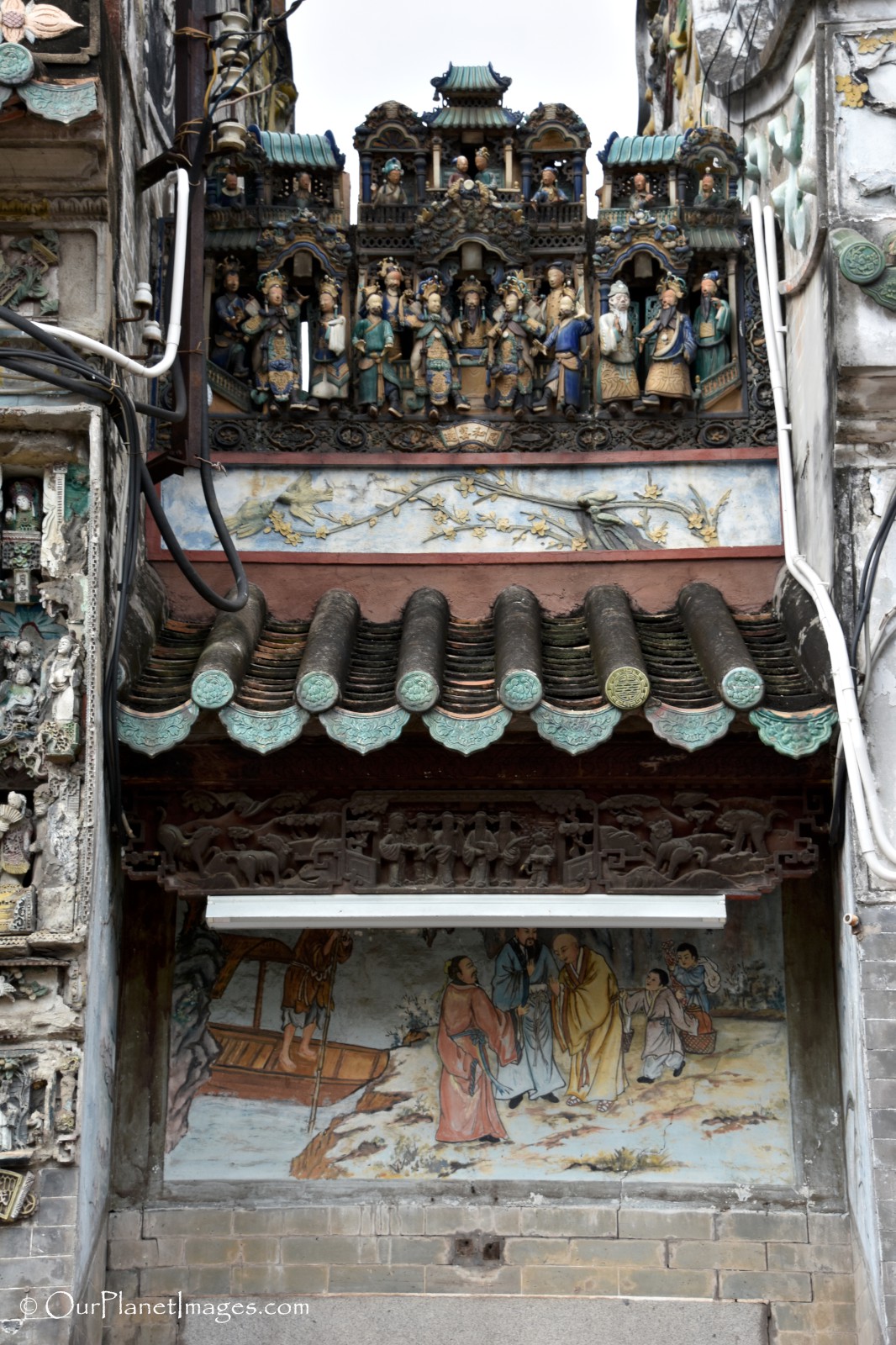
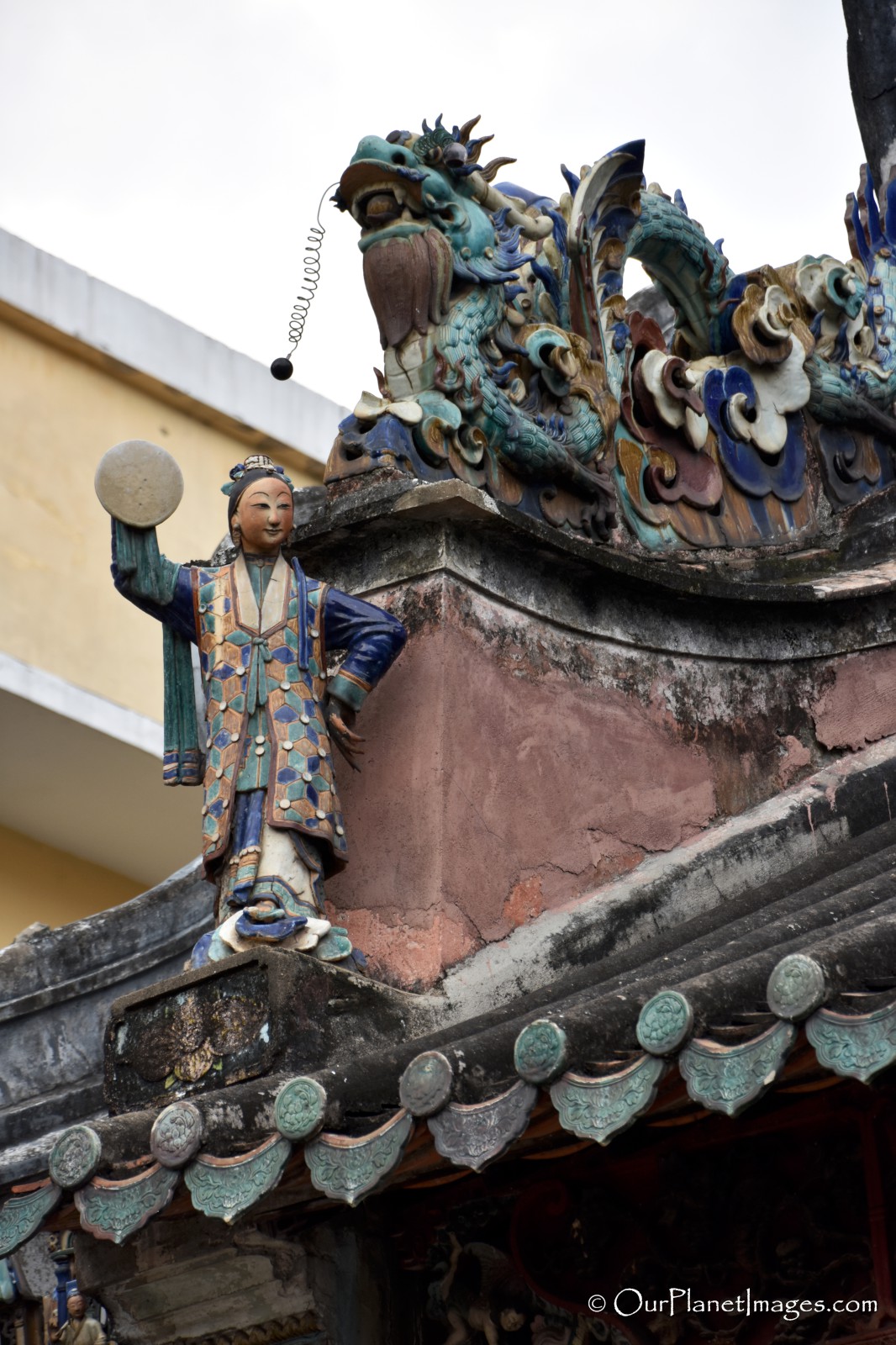
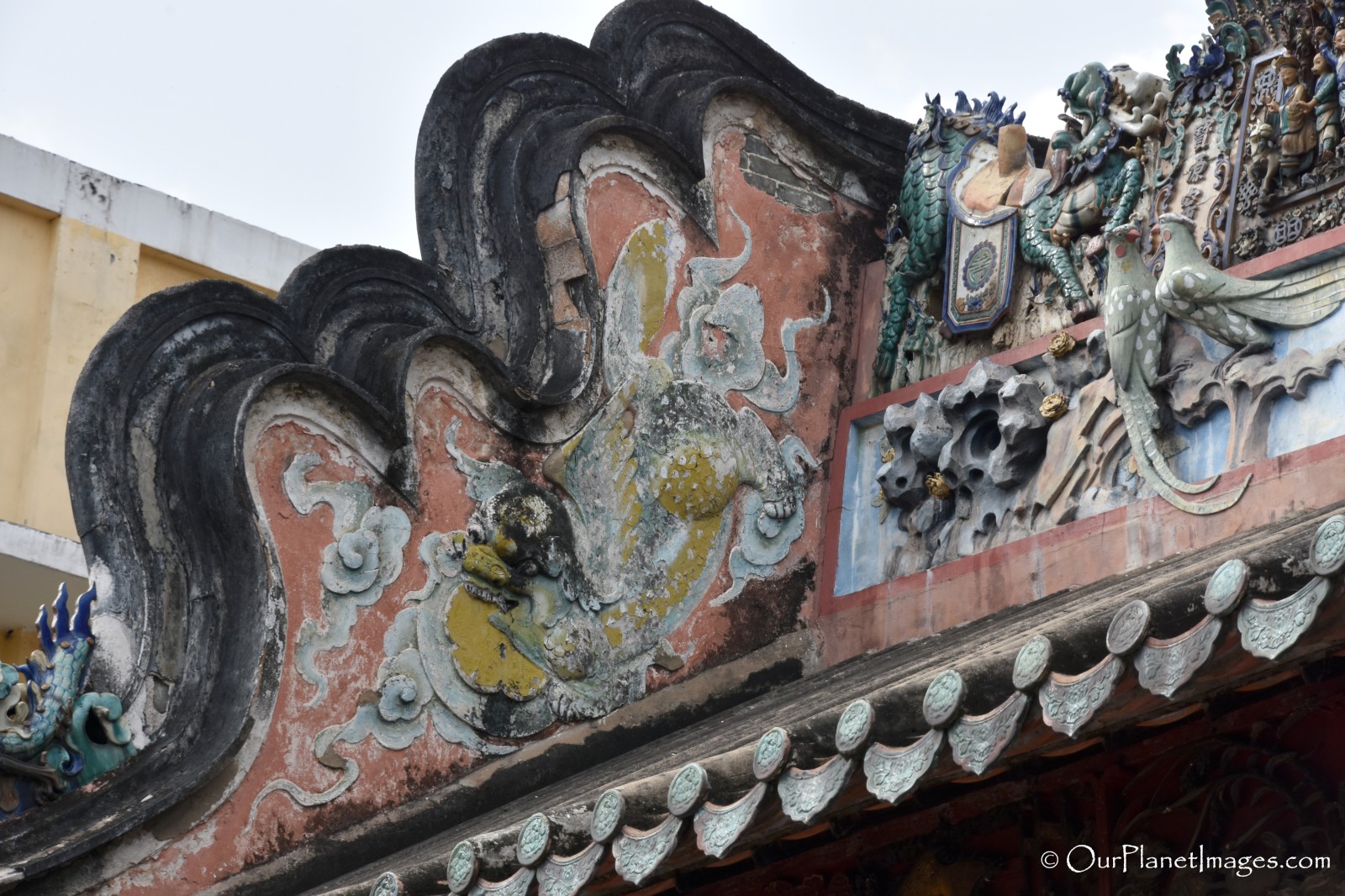
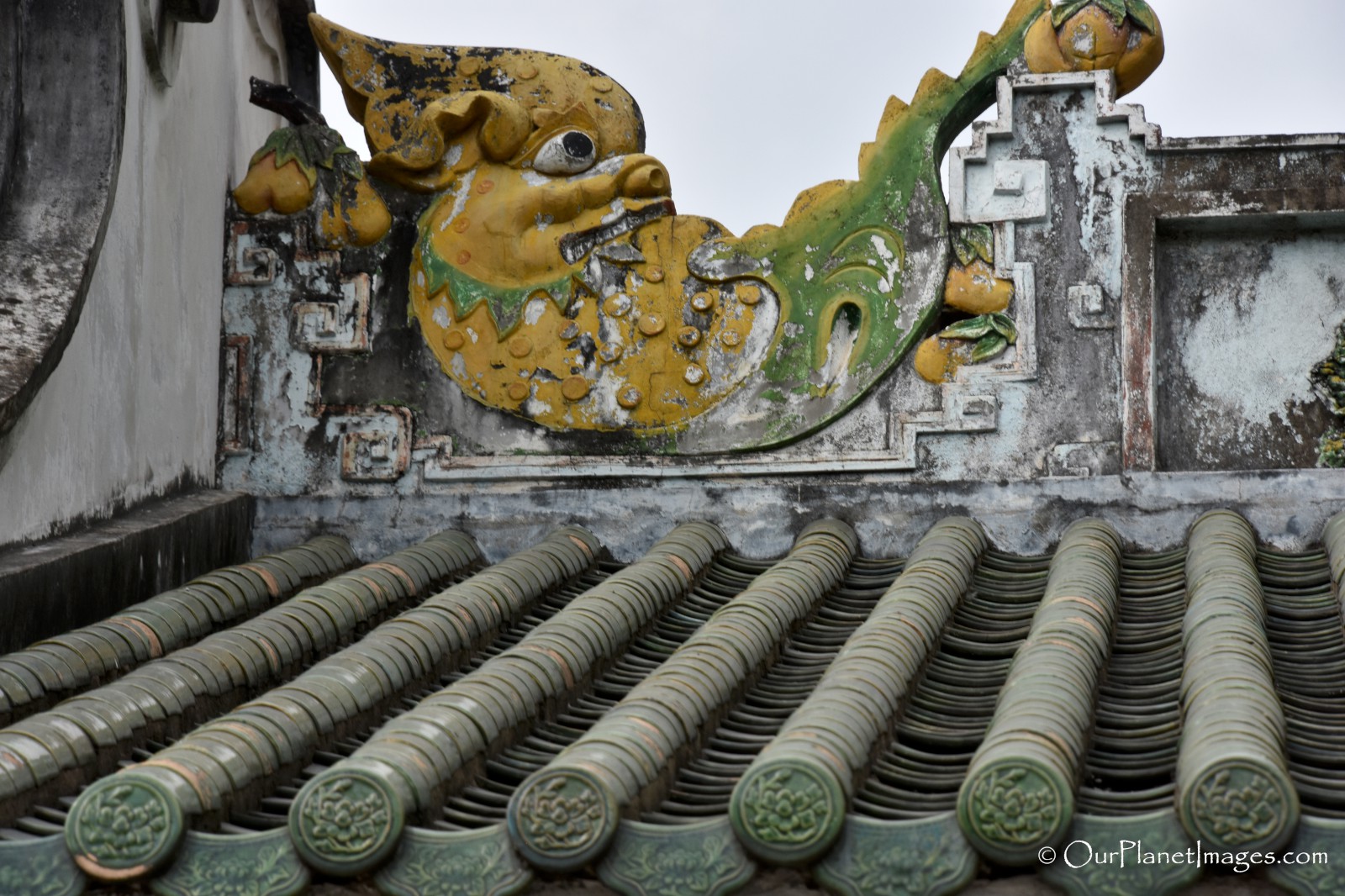
Three Main Halls
The Thien Hau pagoda is built according to the typical architectural style of the Chinese people. In this style of architecture there are three rows of houses which are the front hall, middle hall and back hall. Each hall is separated by an open area called a sky well which helps the smoke of burning incense to escape and they allow natural light into the pagoda.
I don’t know much about the first two halls and I only have a couple of photos of those areas. The photo below was taken from inside the front hall looking into the first sky well.
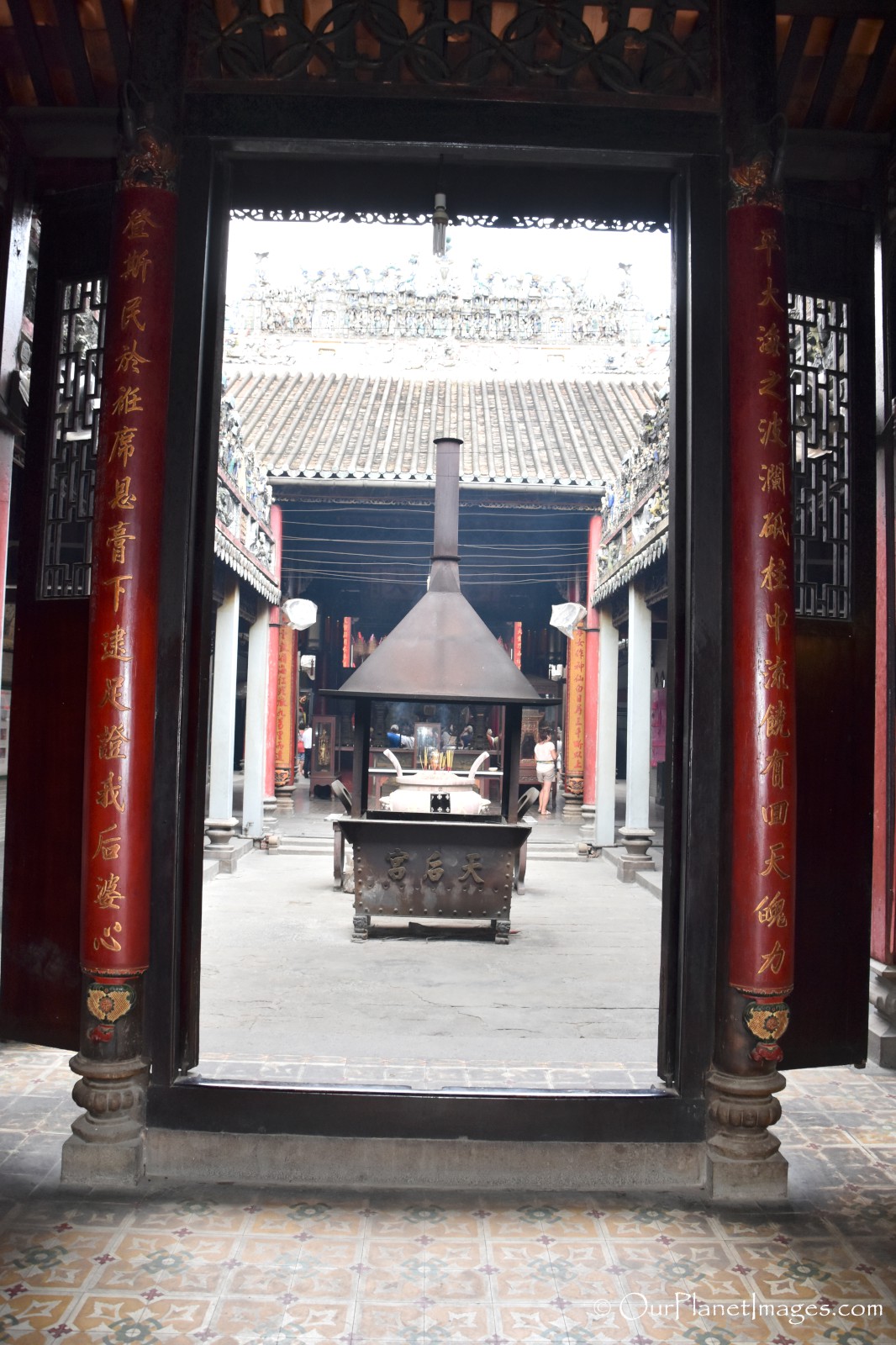
The first sky well is shown in the next two photos.
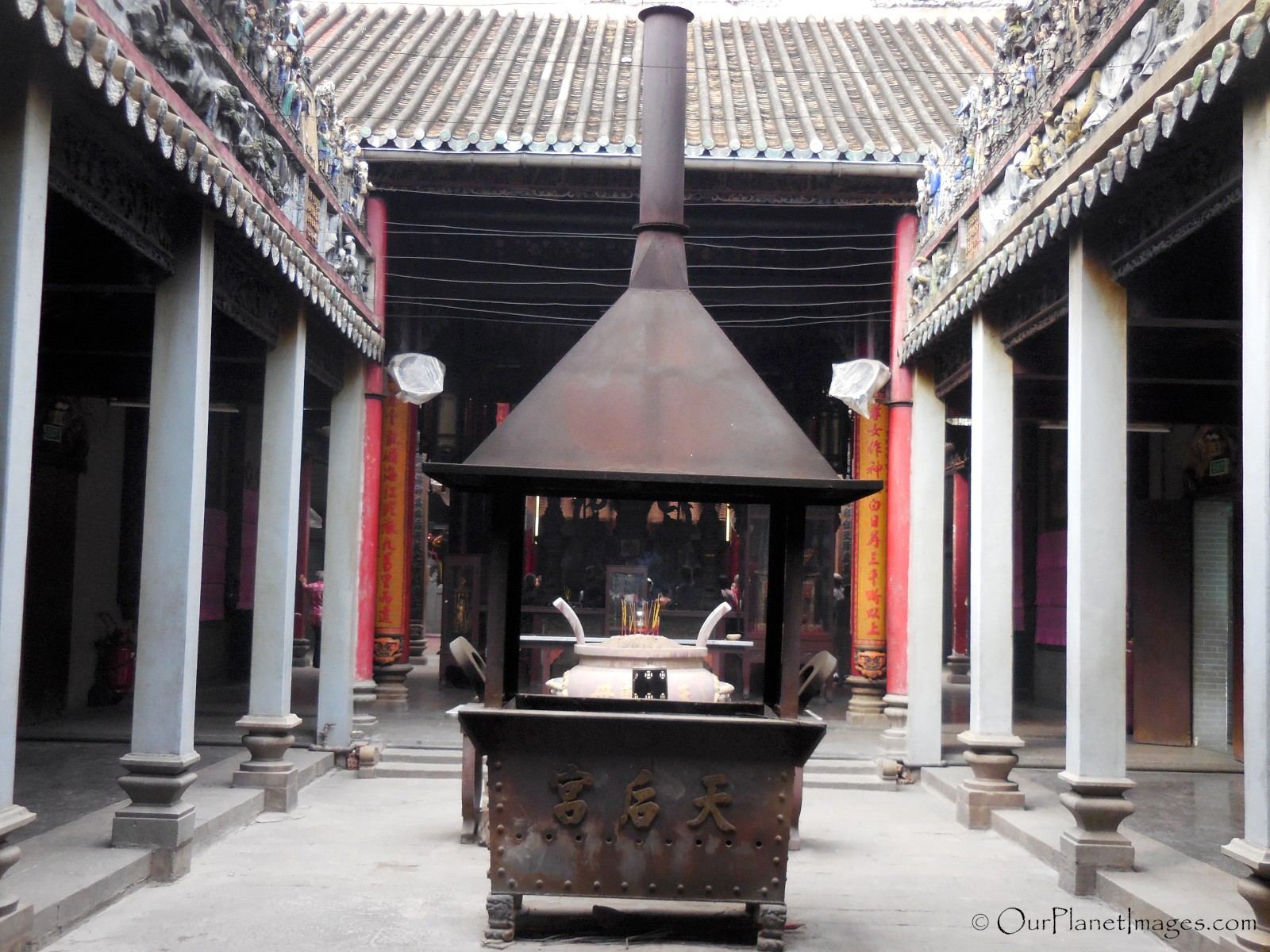
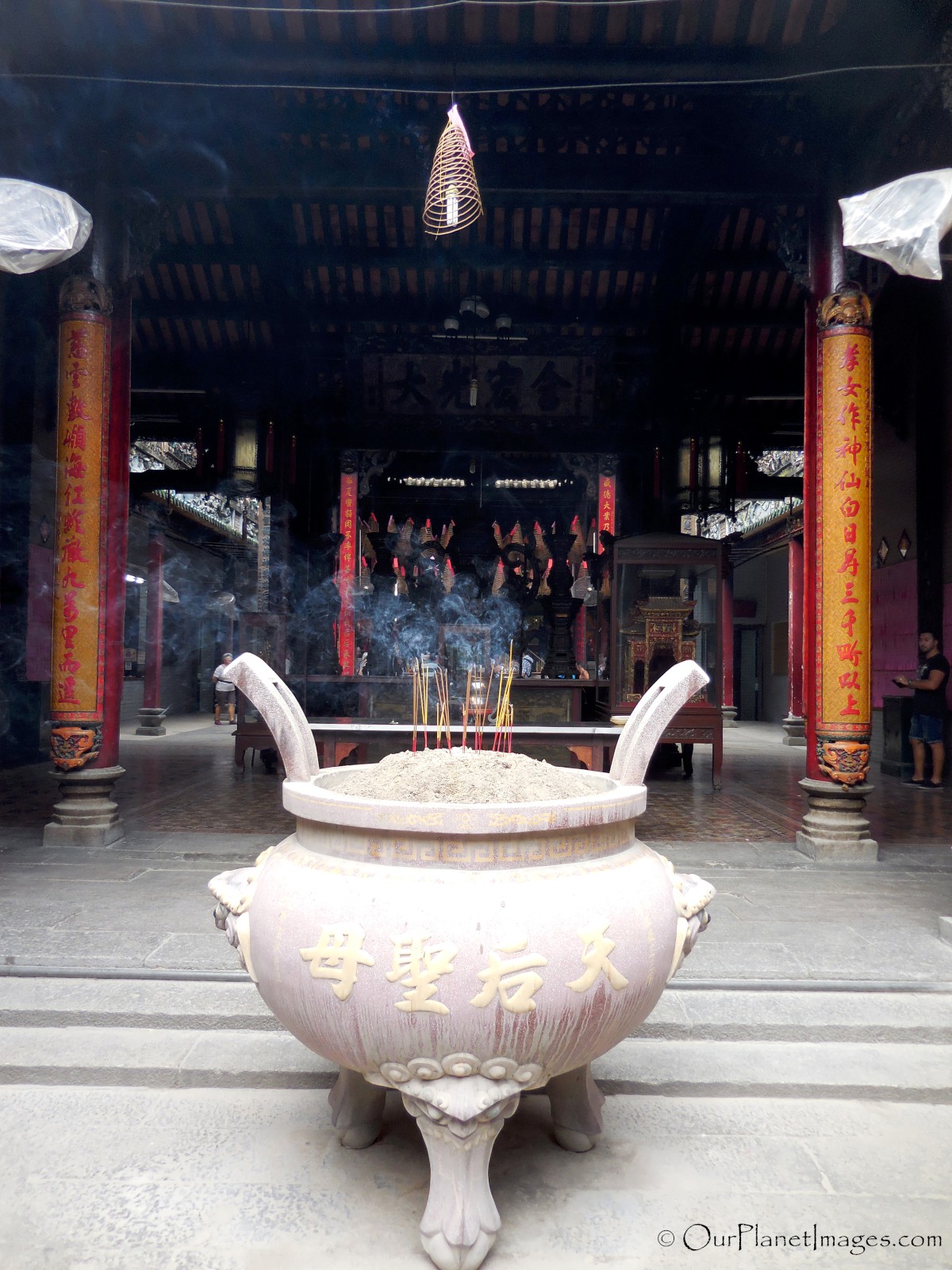
The photo below is of the second hall.
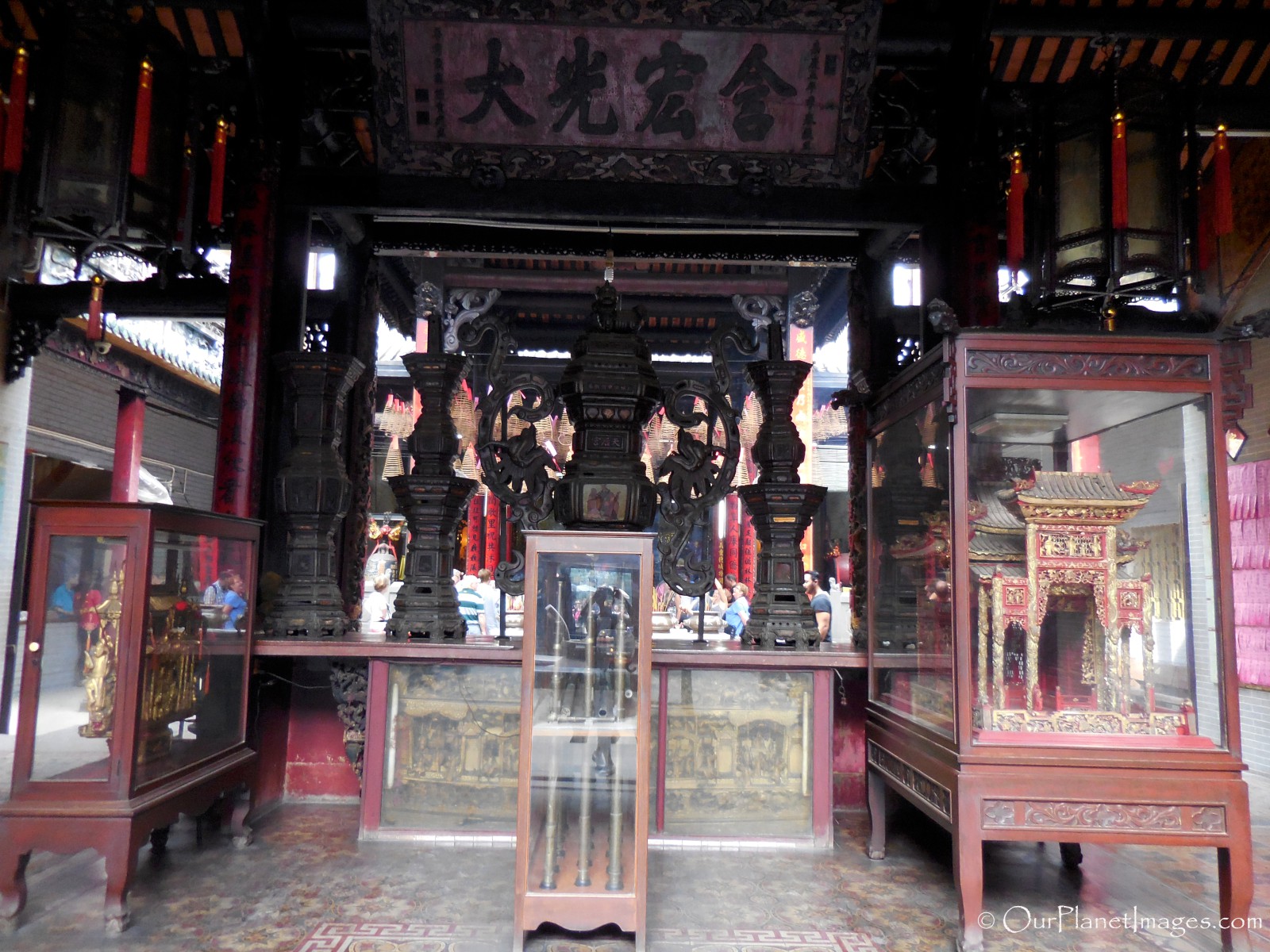
The second sky well is much larger than the first and more activity is happening in this area. The primary feature is a gazebo with coiled incense hanging beneath the gazebo cover. On tables under the gazebo are incense pots with burning incense.
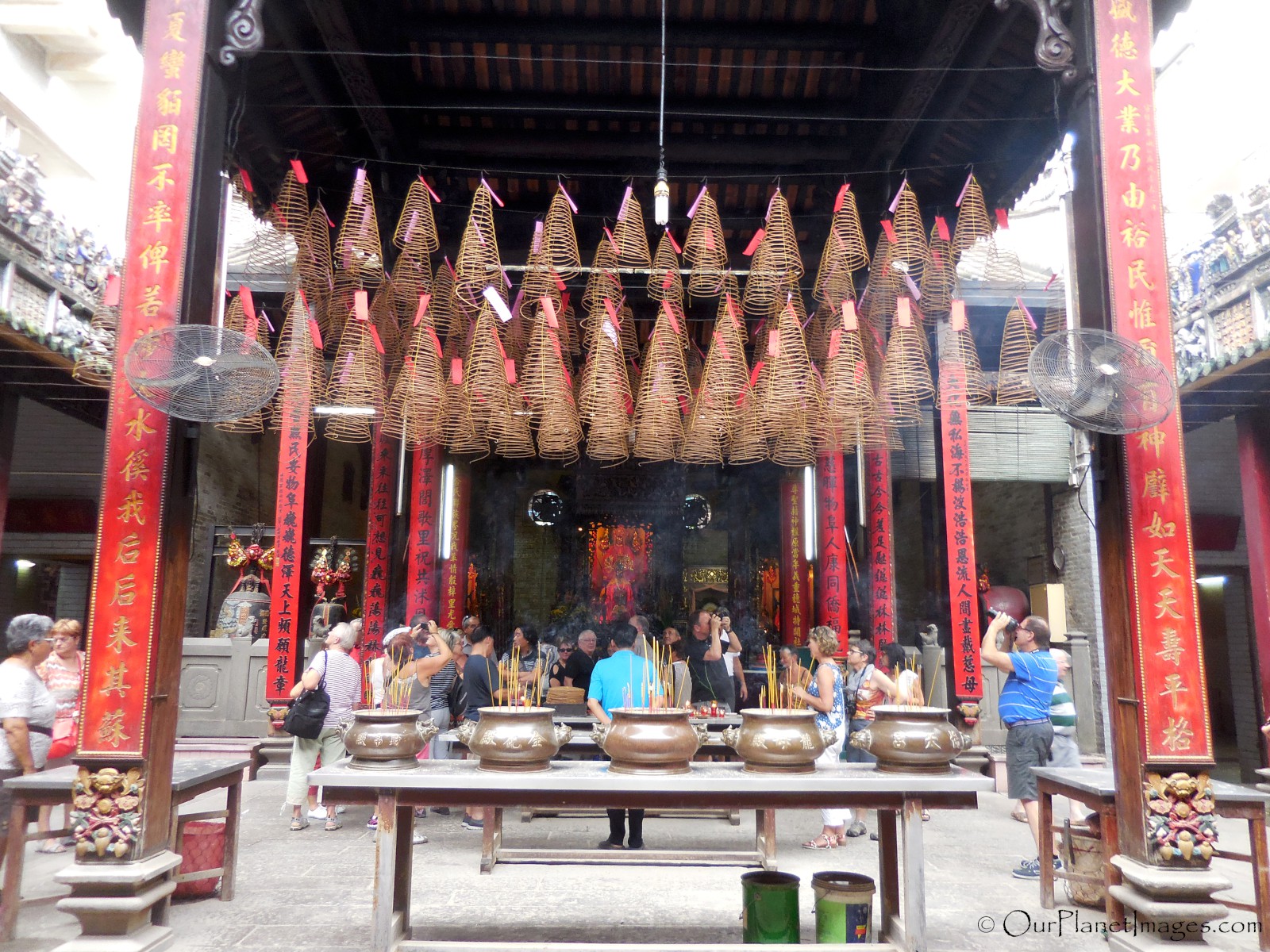
The primary hall is the back hall where a statue of Lady Thien Hau is place in the center of the back wall with statues of Kim Hoa Nuong on the right side and Long Mau Nuong Nuong on the left side. Their faces are bronze in color and the clothes are brightly colored.
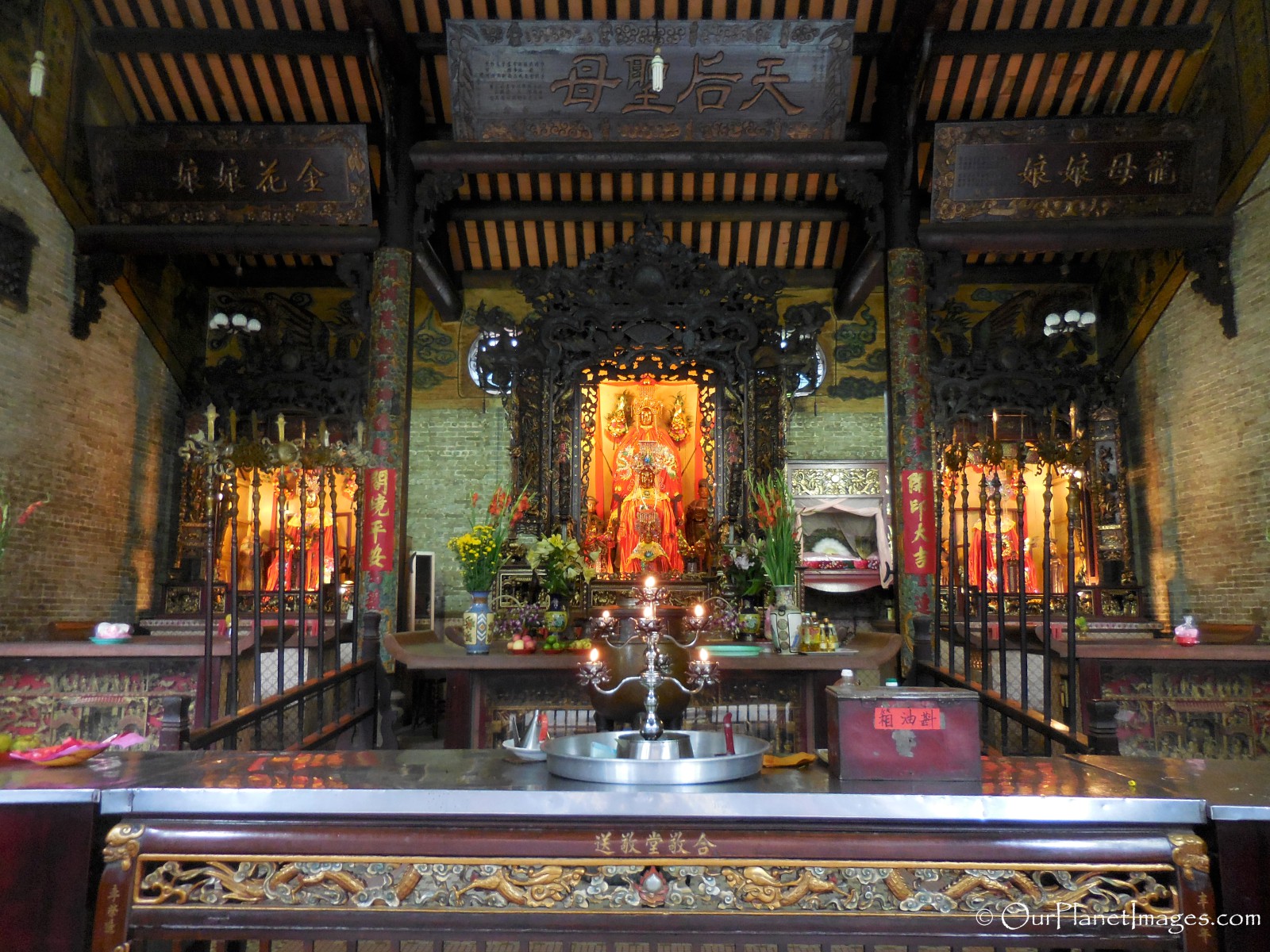
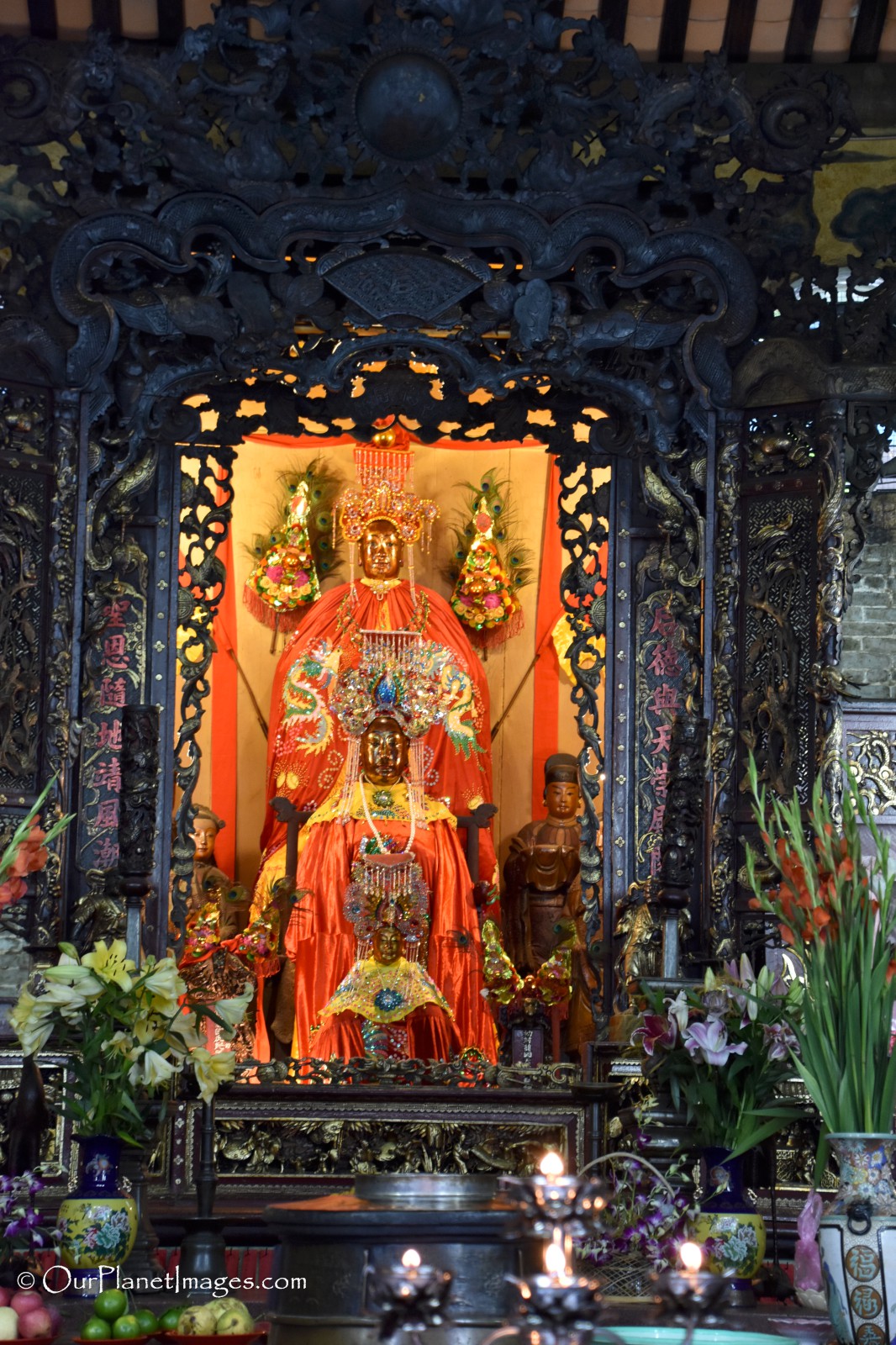
Pagoda’s special features
The pagoda has two special features that I found interesting.
The first special feature are dozens of incense coils suspended under the gazebo roof that visitors to the temple can purchase. They then attach their names and their wishes to the incense coil. As the incense smoke curls upwards in the air, they believe their prayers are transmitted to the deity. Many of the incense coils are large with diameters of more than a meter which can burn for several weeks.
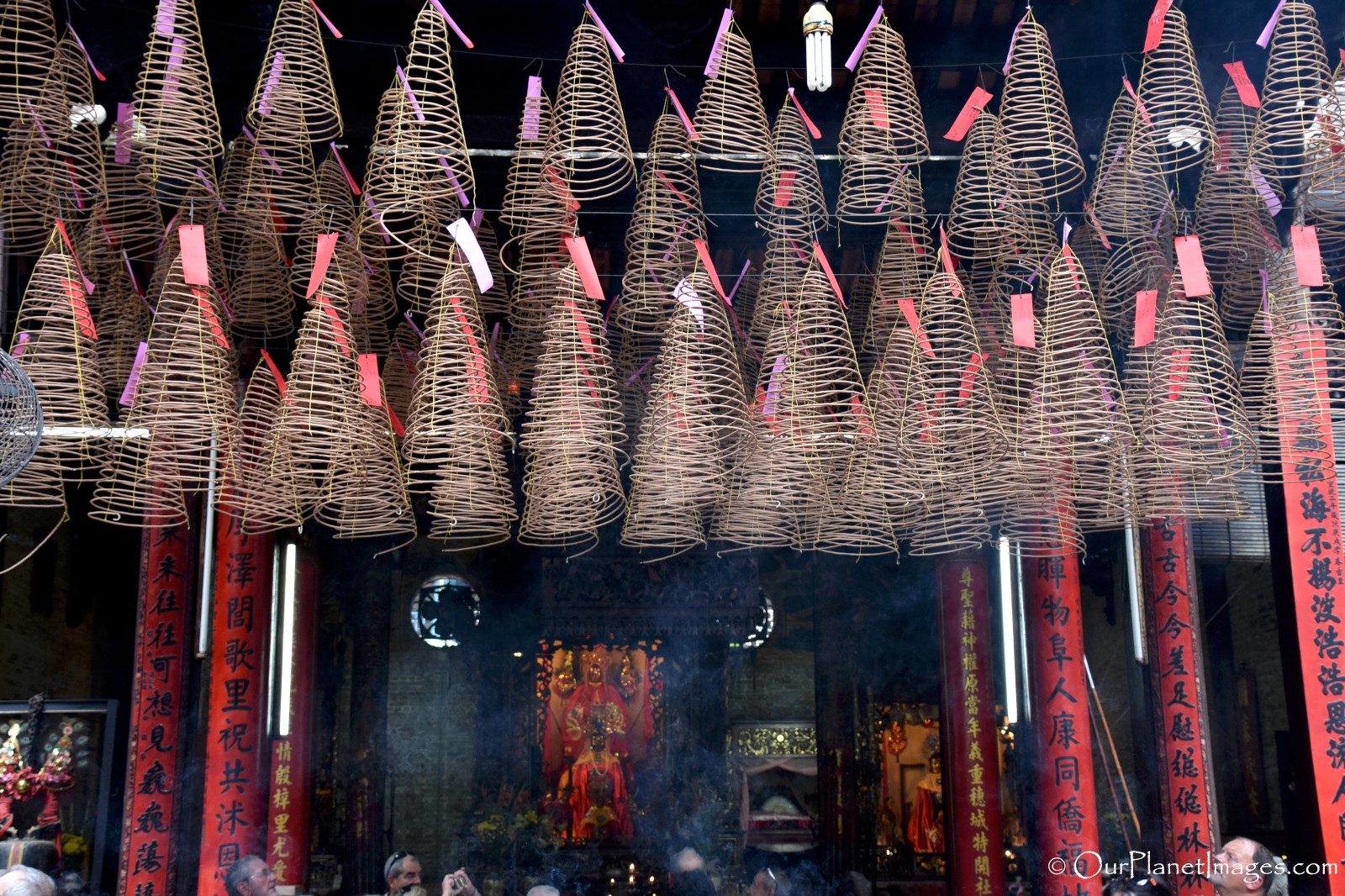
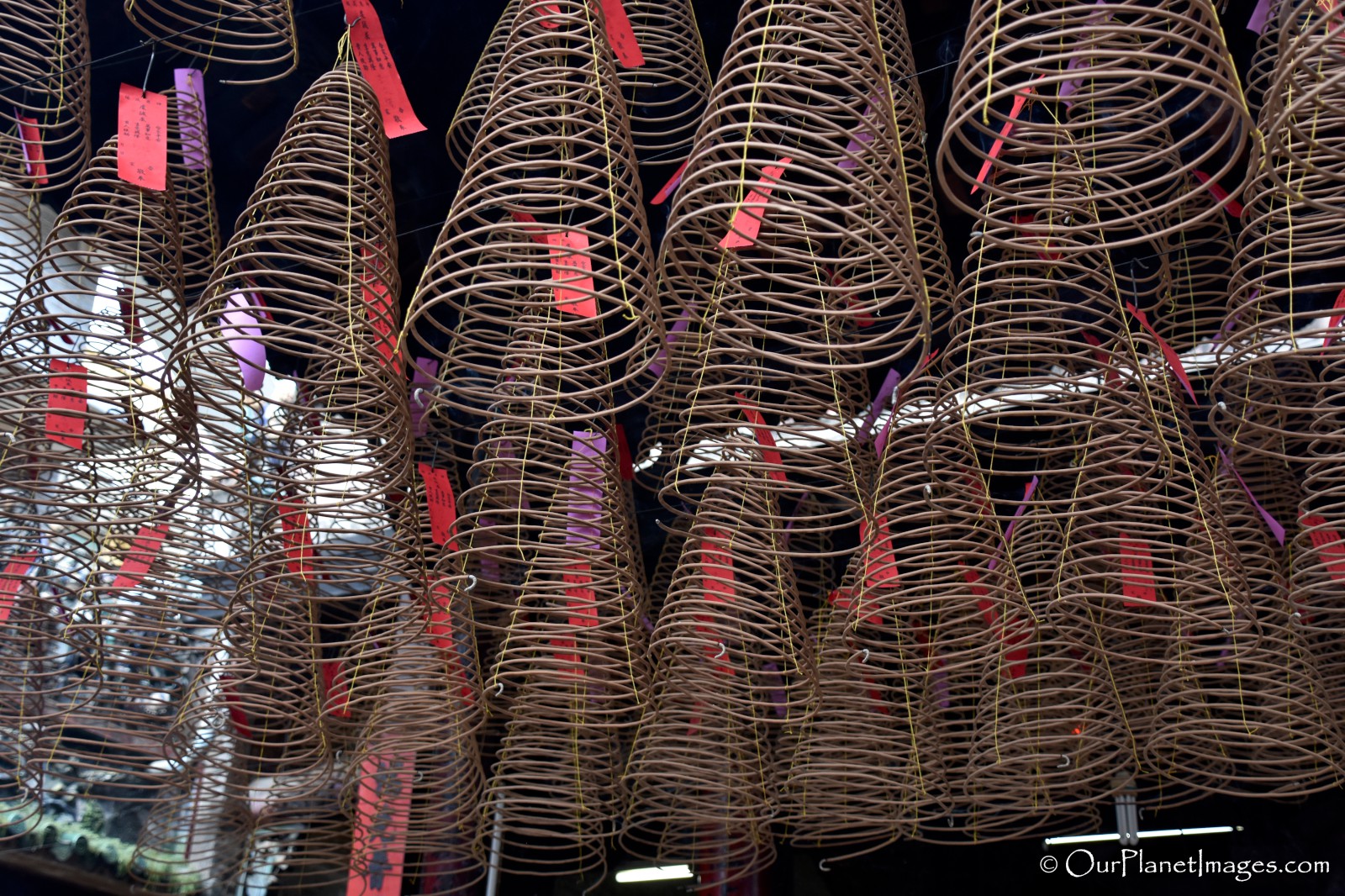
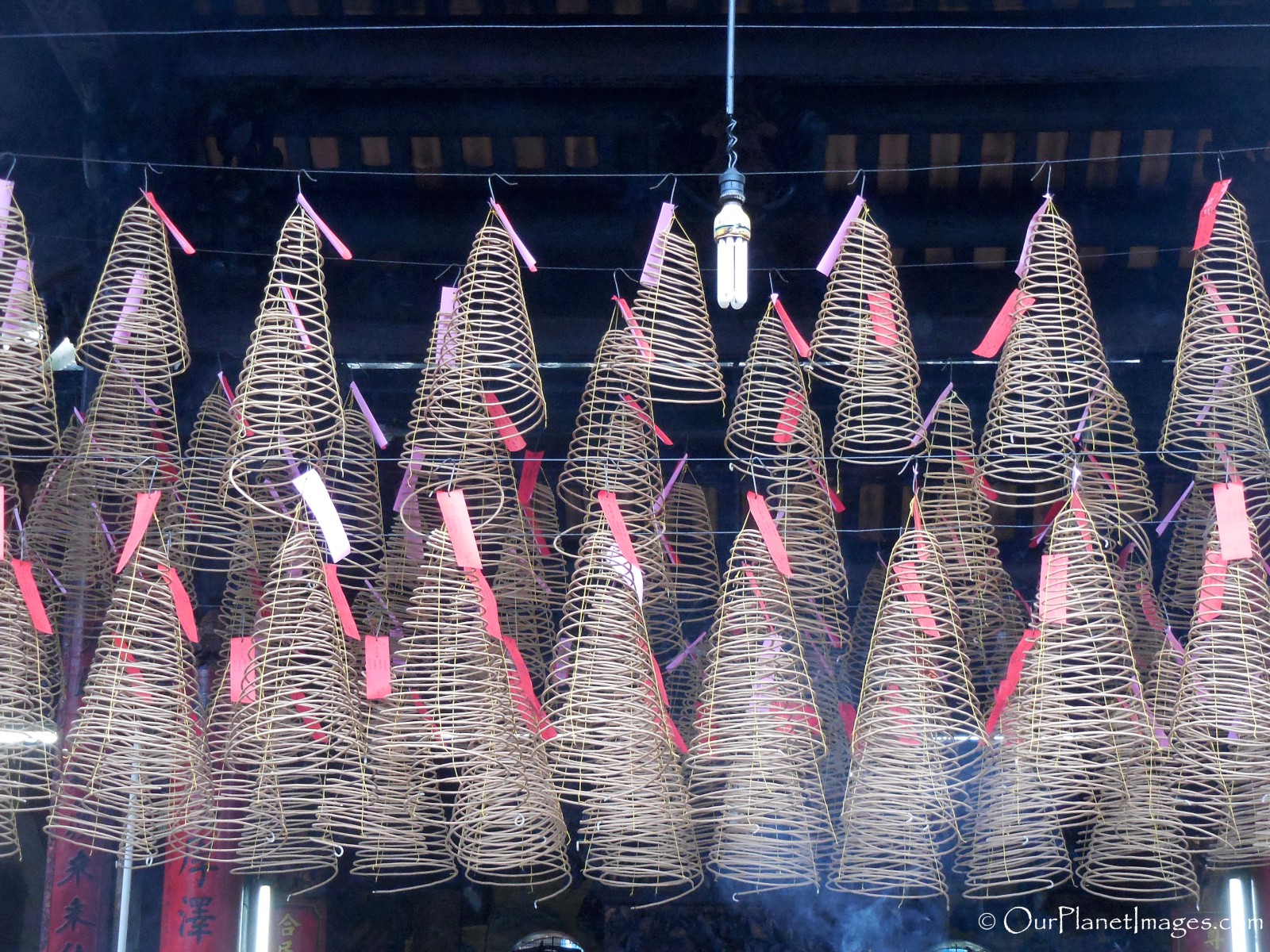
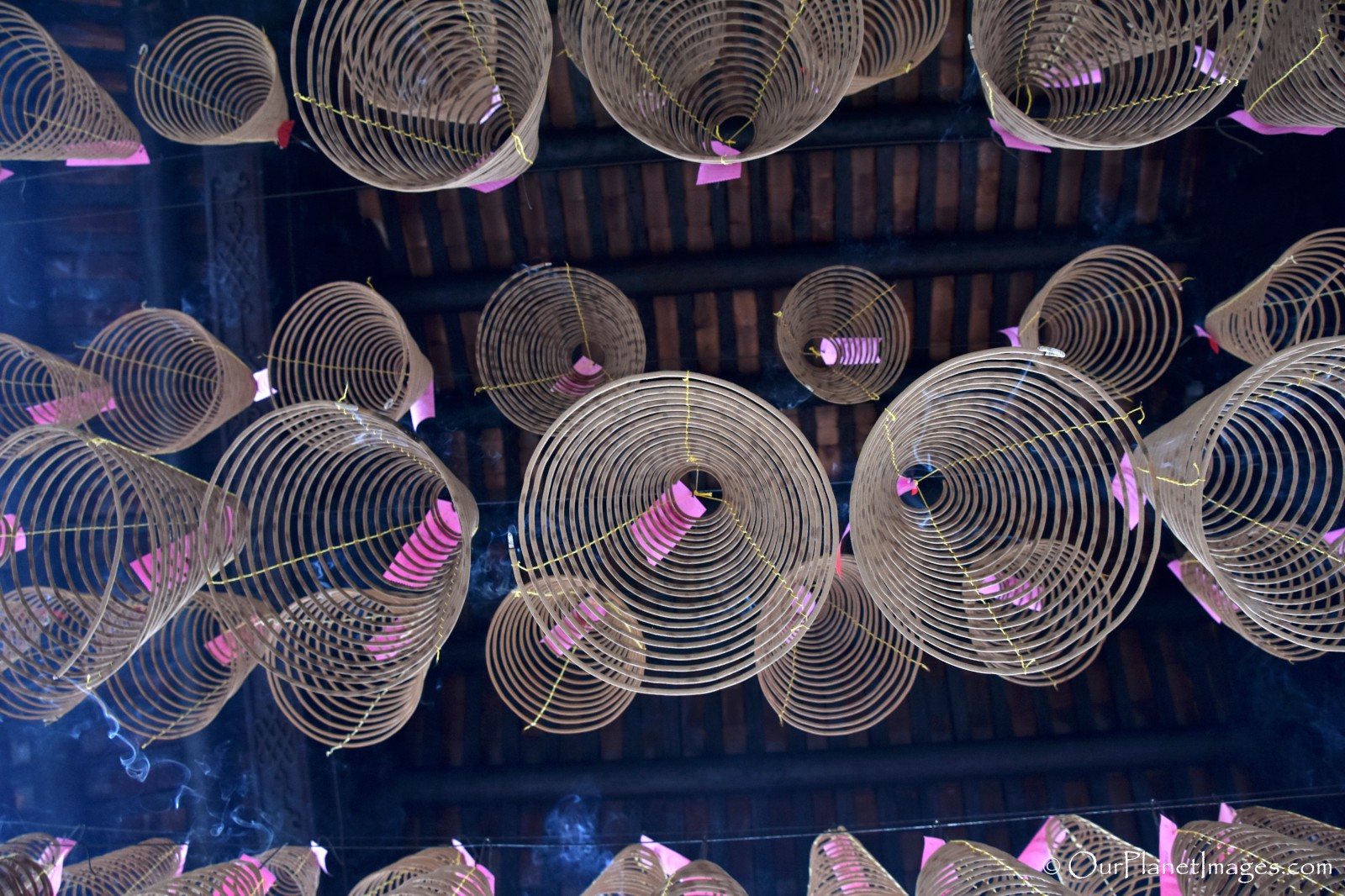
The second special feature that I found interesting was wall with dozens of pink paper slips. The slips contains the names of people who have made donations to the pagoda. After each donation, the calligraphy artist will write your name on a pink slip of paper in either Chinese, Vietnamese or English. As a sign of respect, the caretakers of the pagoda will hang your slip of paper onto the pagoda walls.
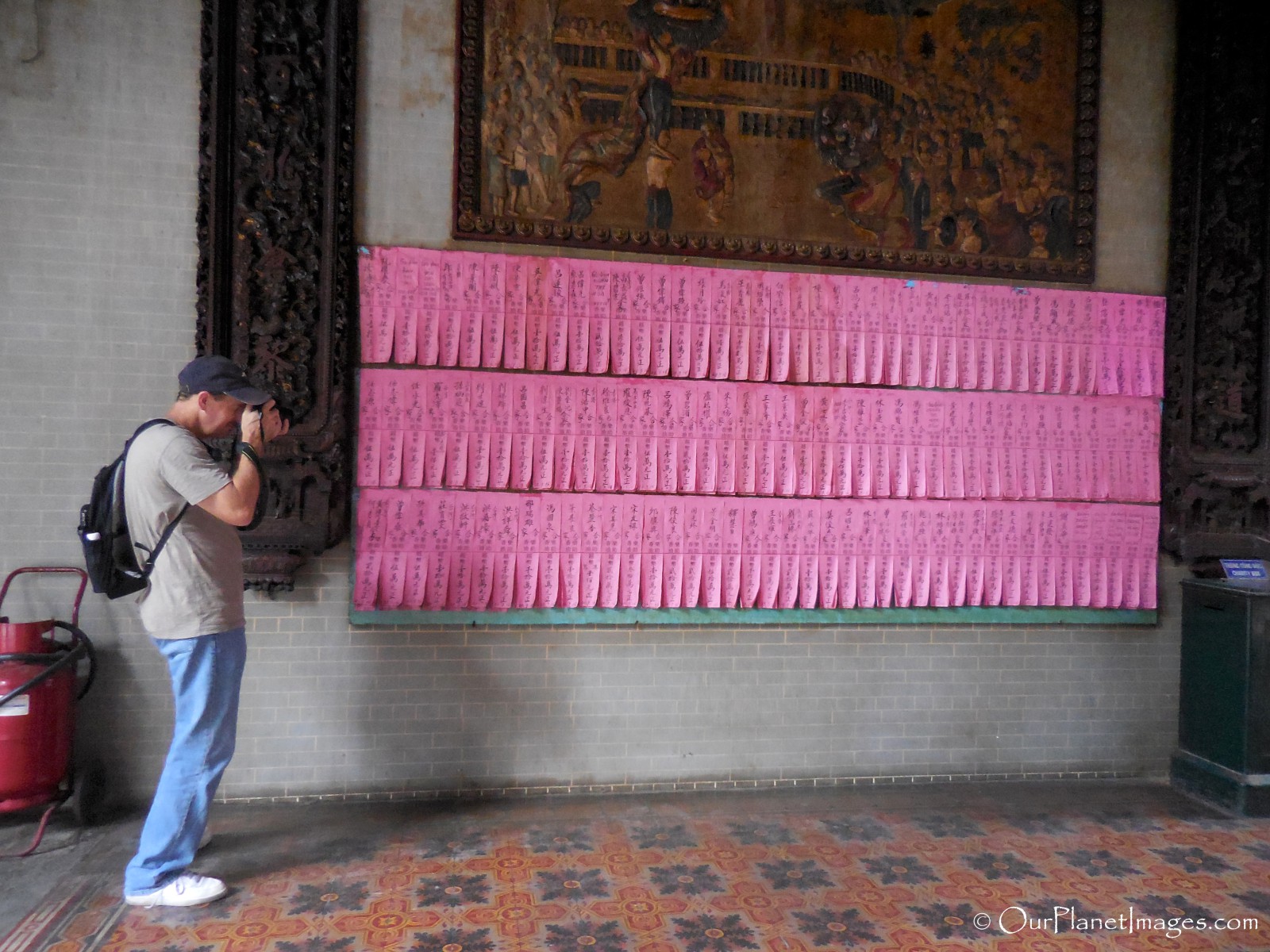
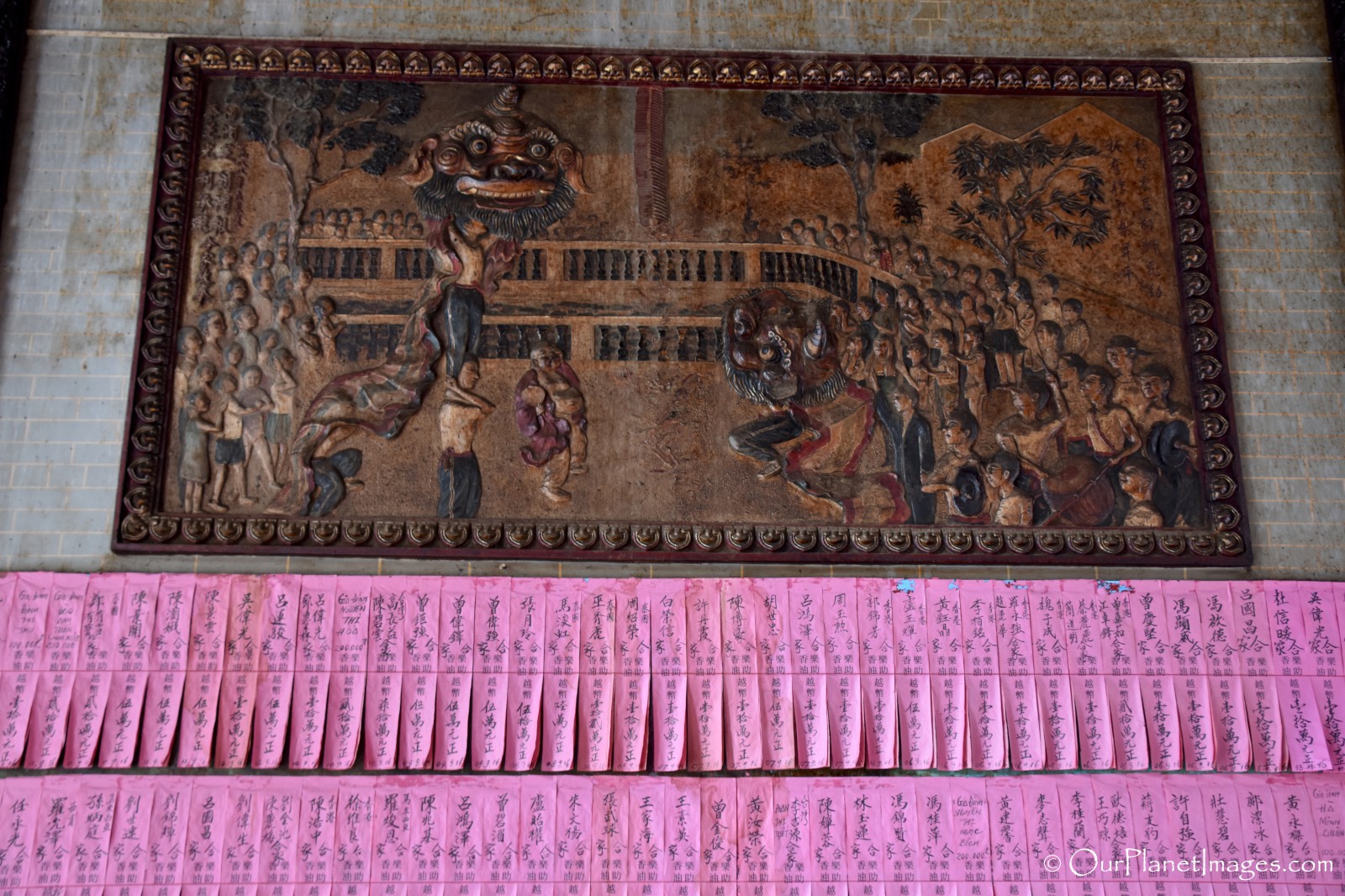
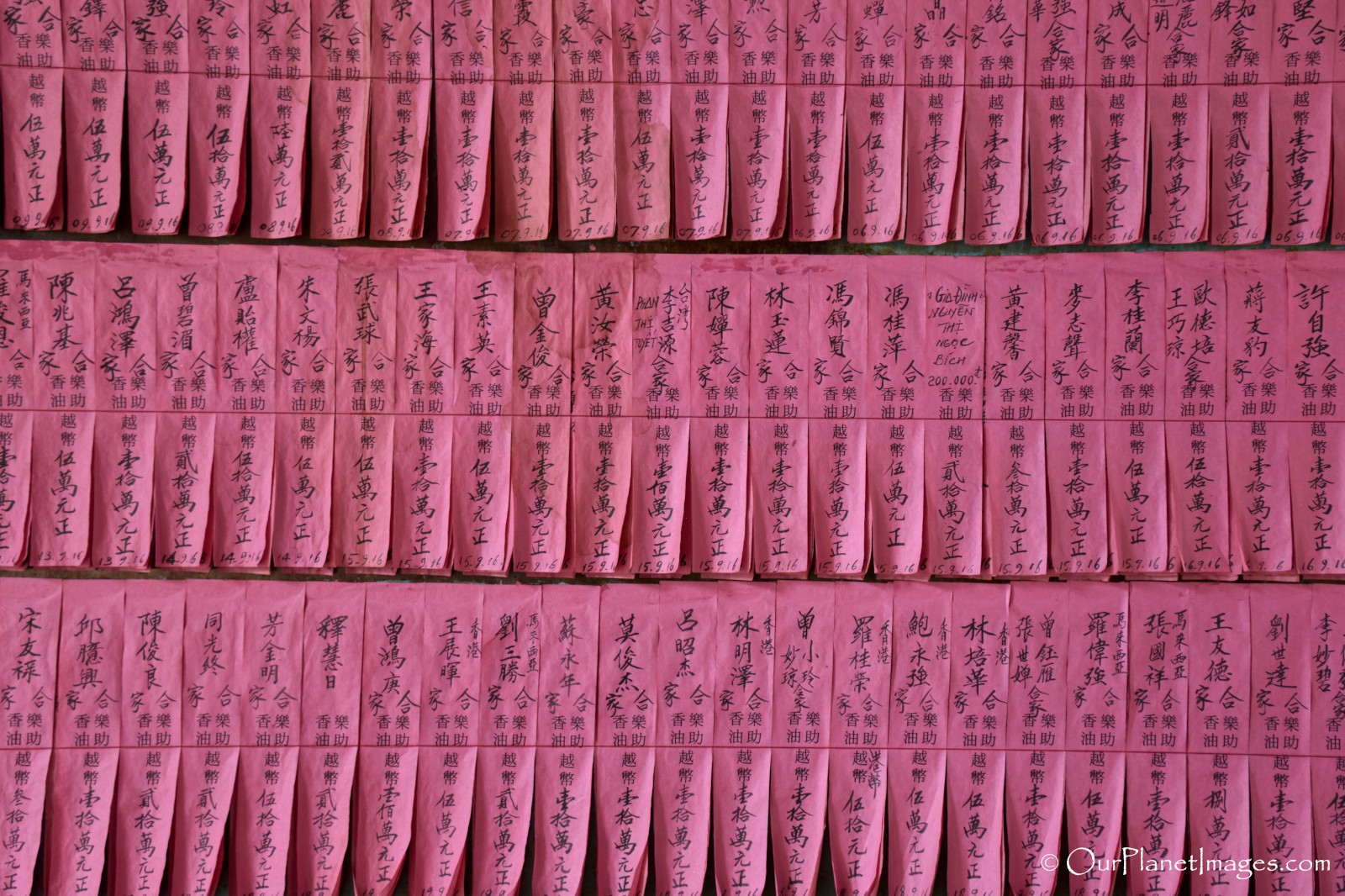
Burning incense sticks
Several places around the pagoda are incense pots with burning incense sticks. I think the smoke from the incense stick add to the ambiance of the pagoda and they make interesting photos.
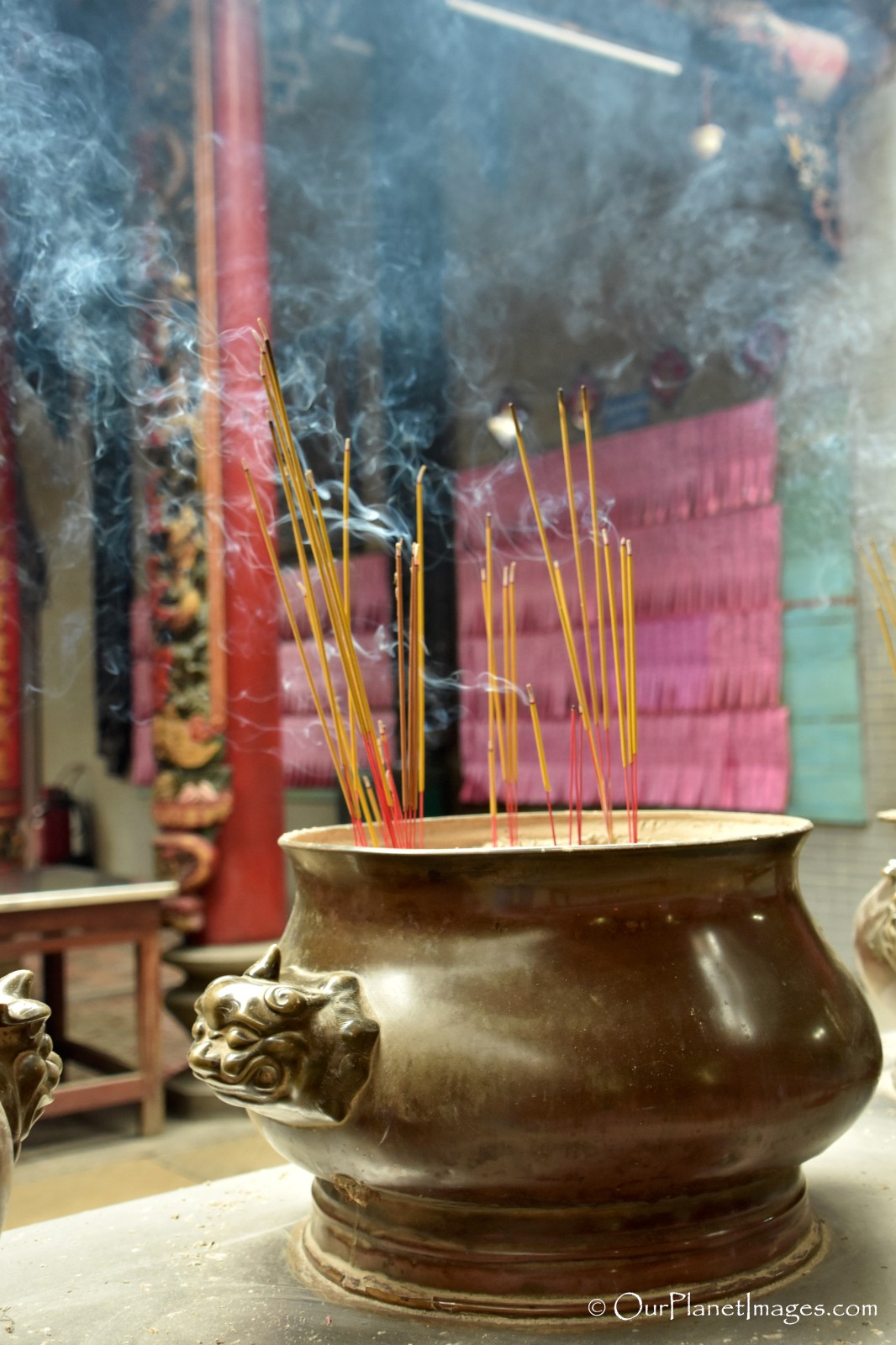

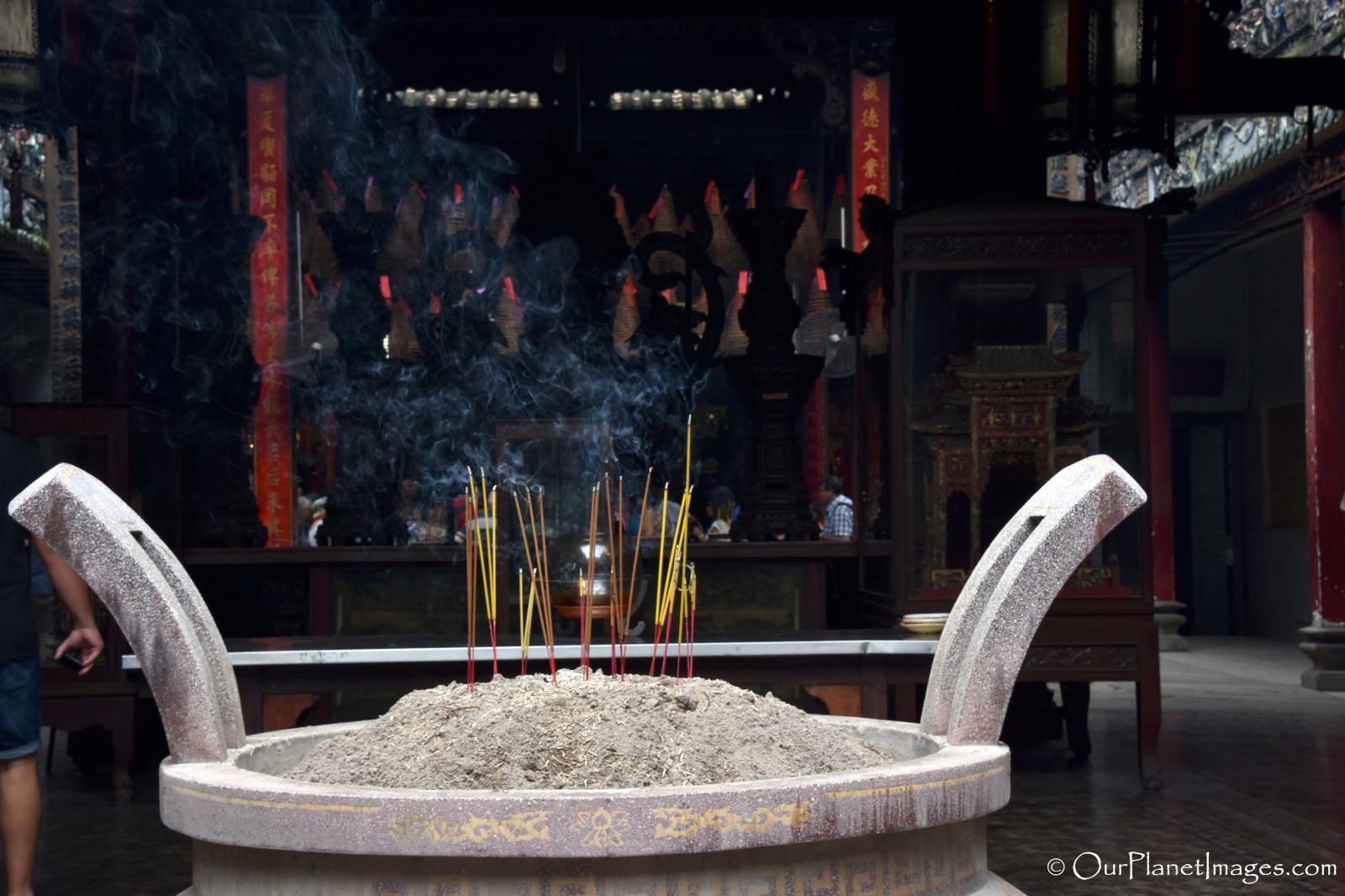
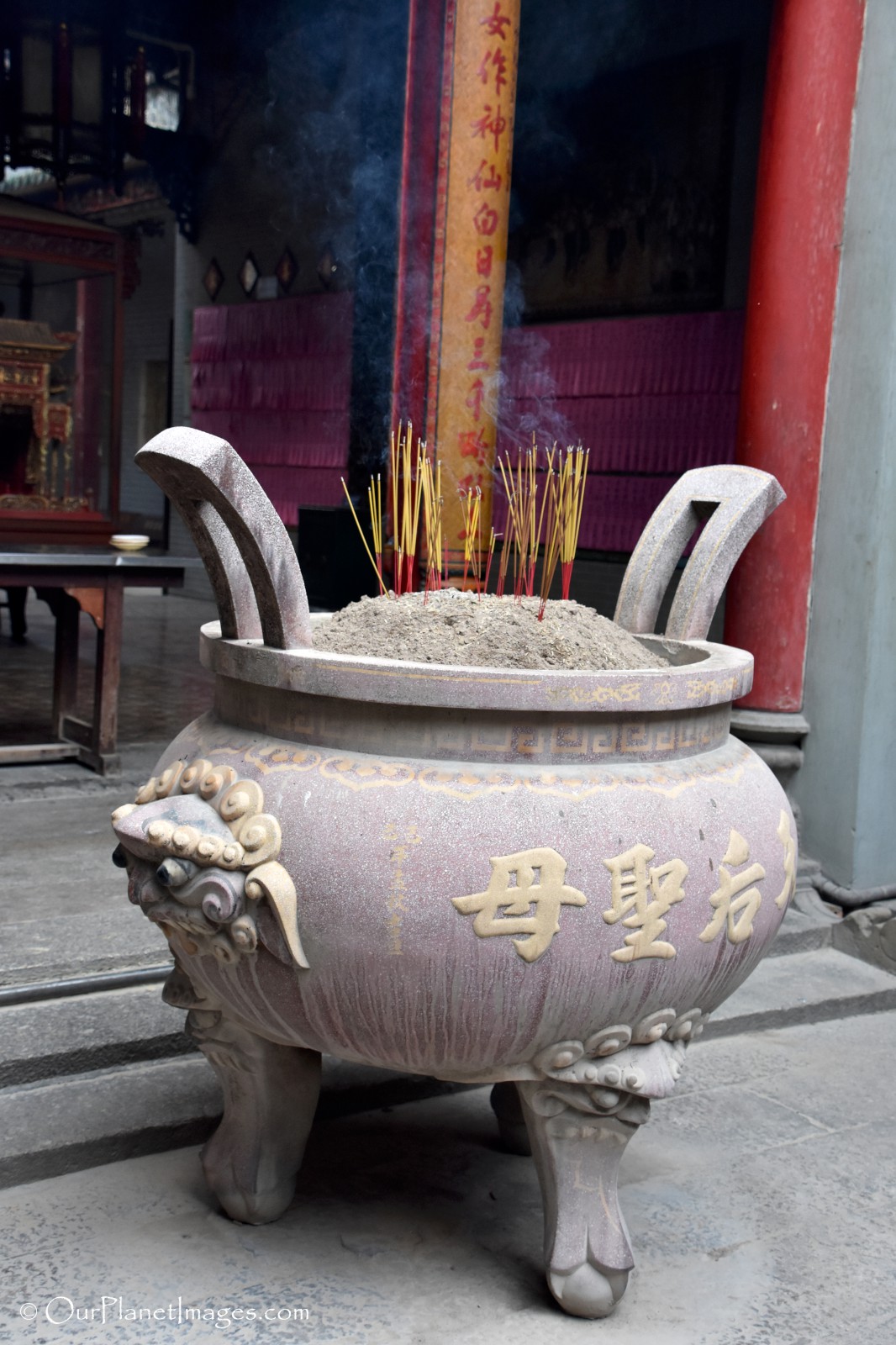
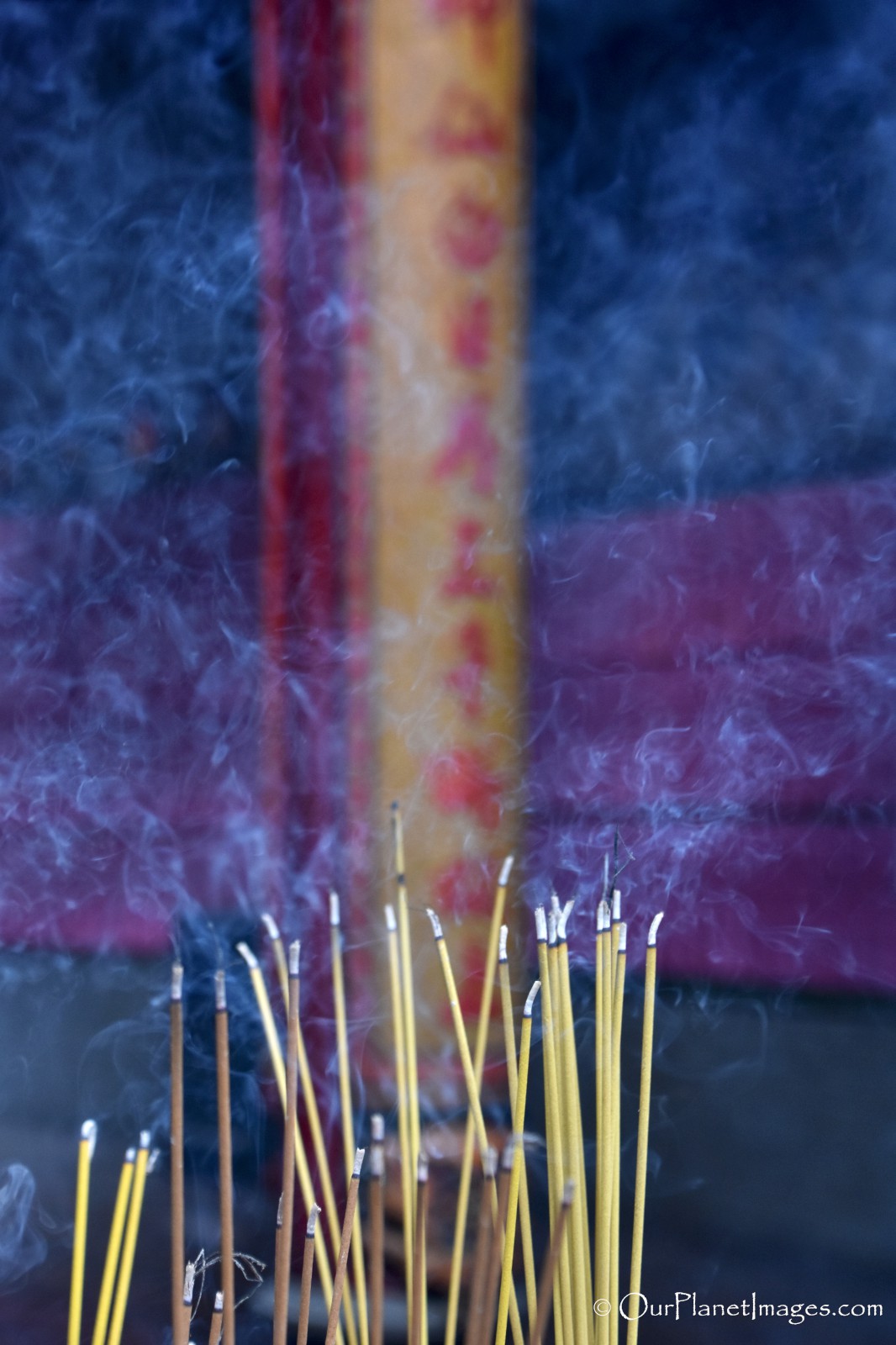
Other Artifacts
Similar to most religious places in Asia, the Thien Hau Pagoda has religious artifacts almost everywhere that you look. The pagoda has about 400 antiques including statues, bells, bronze incense burners and pictures. I included photos of some of these in my closing pictures.
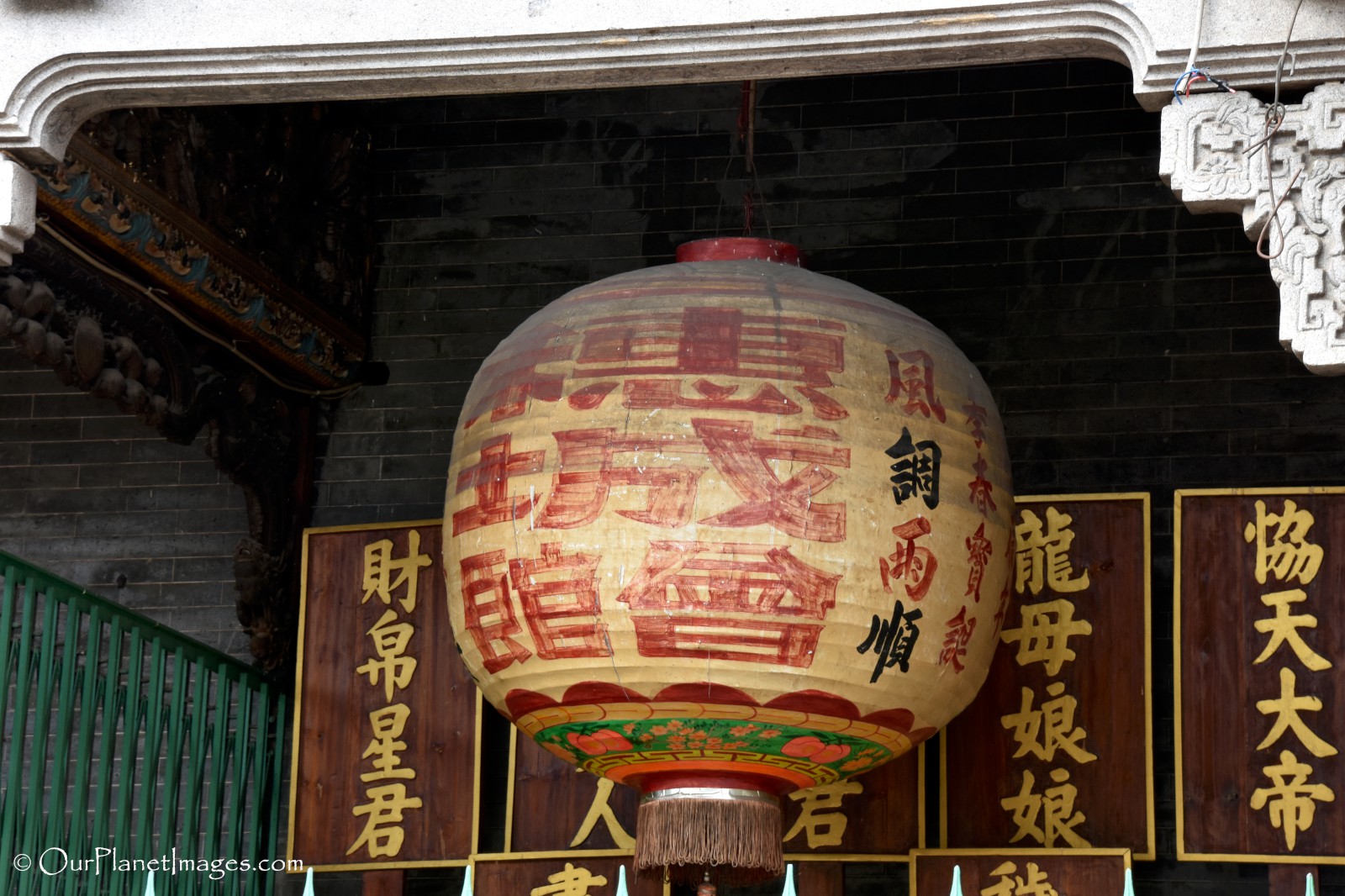
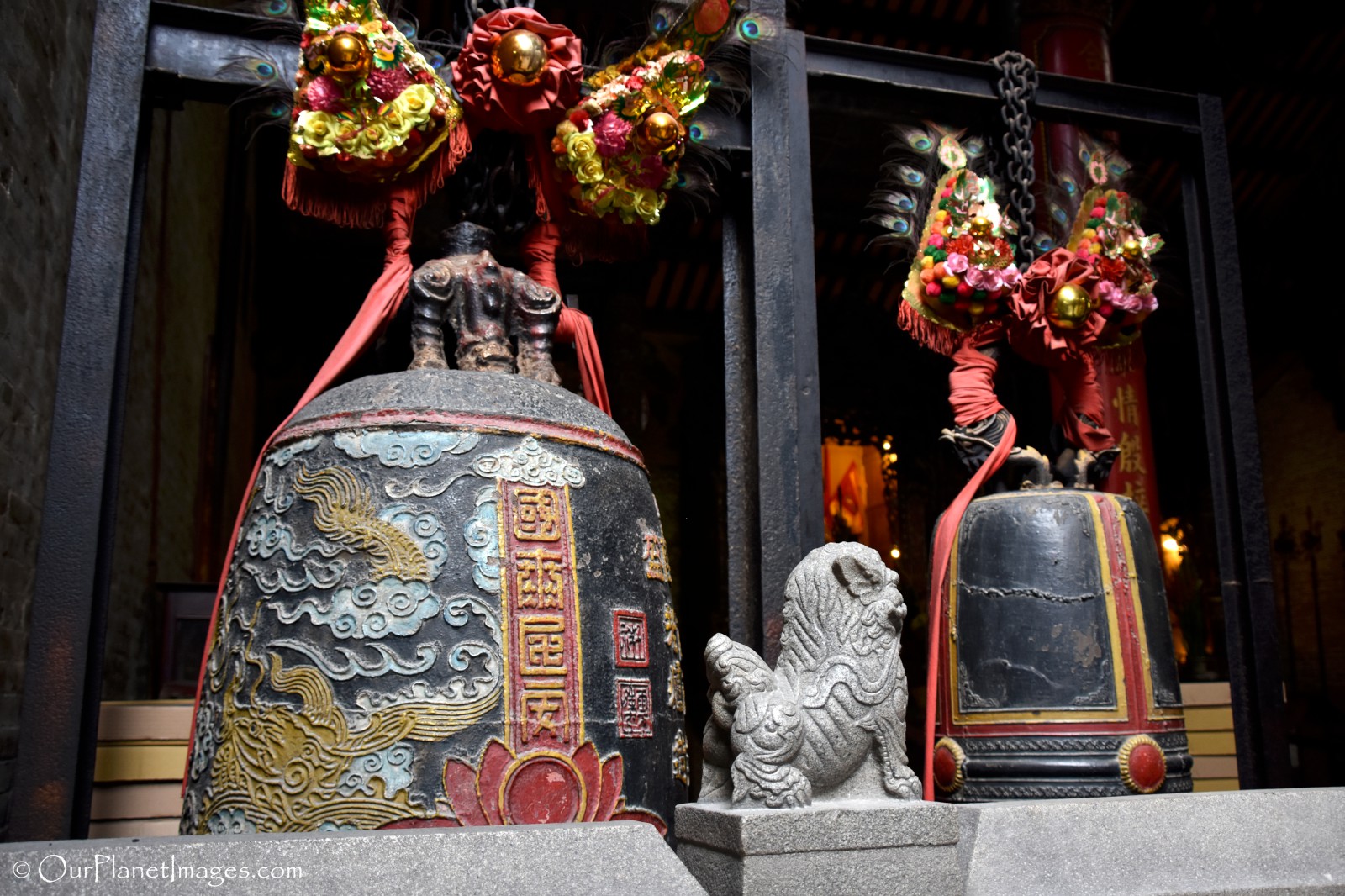
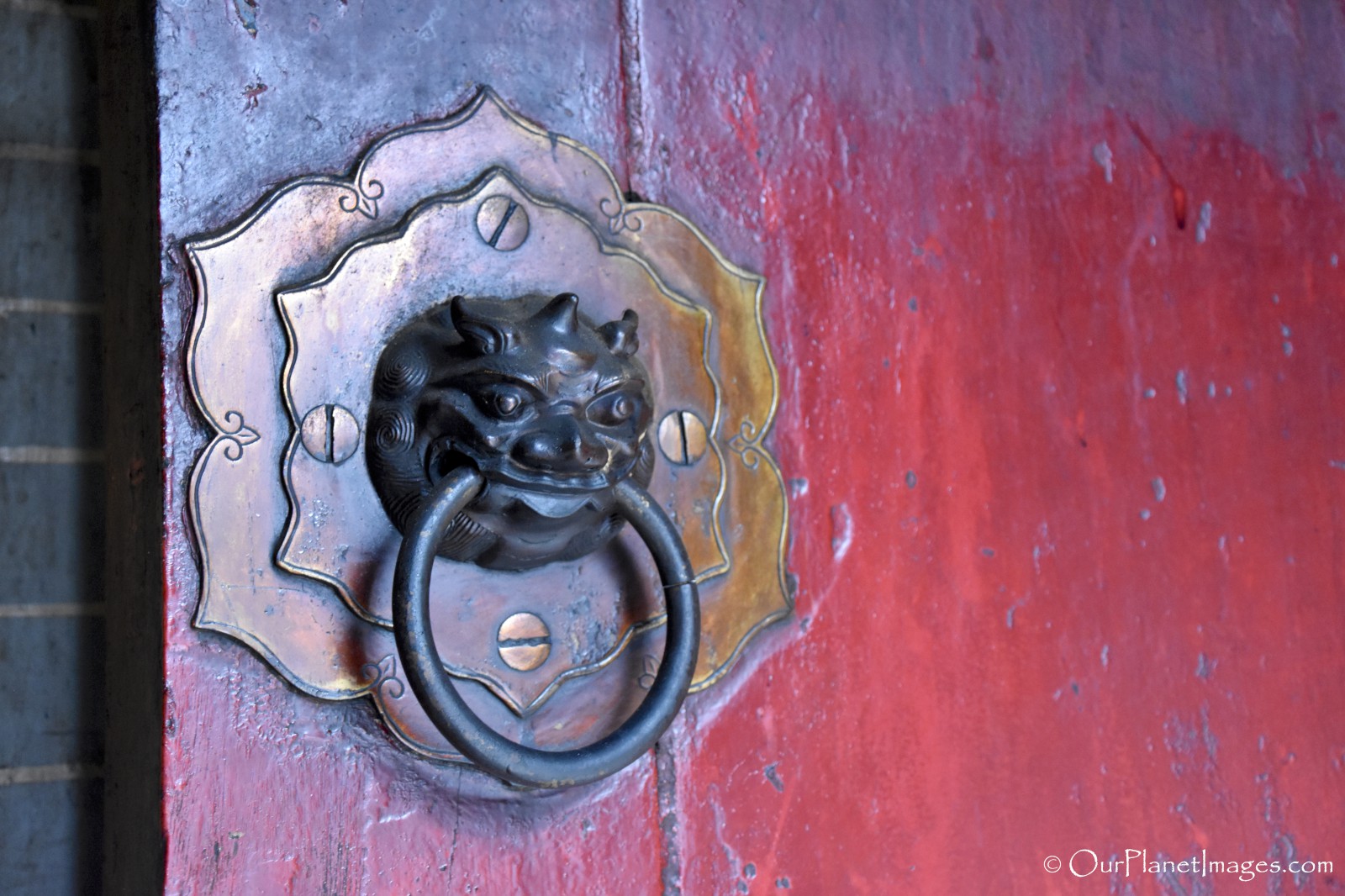
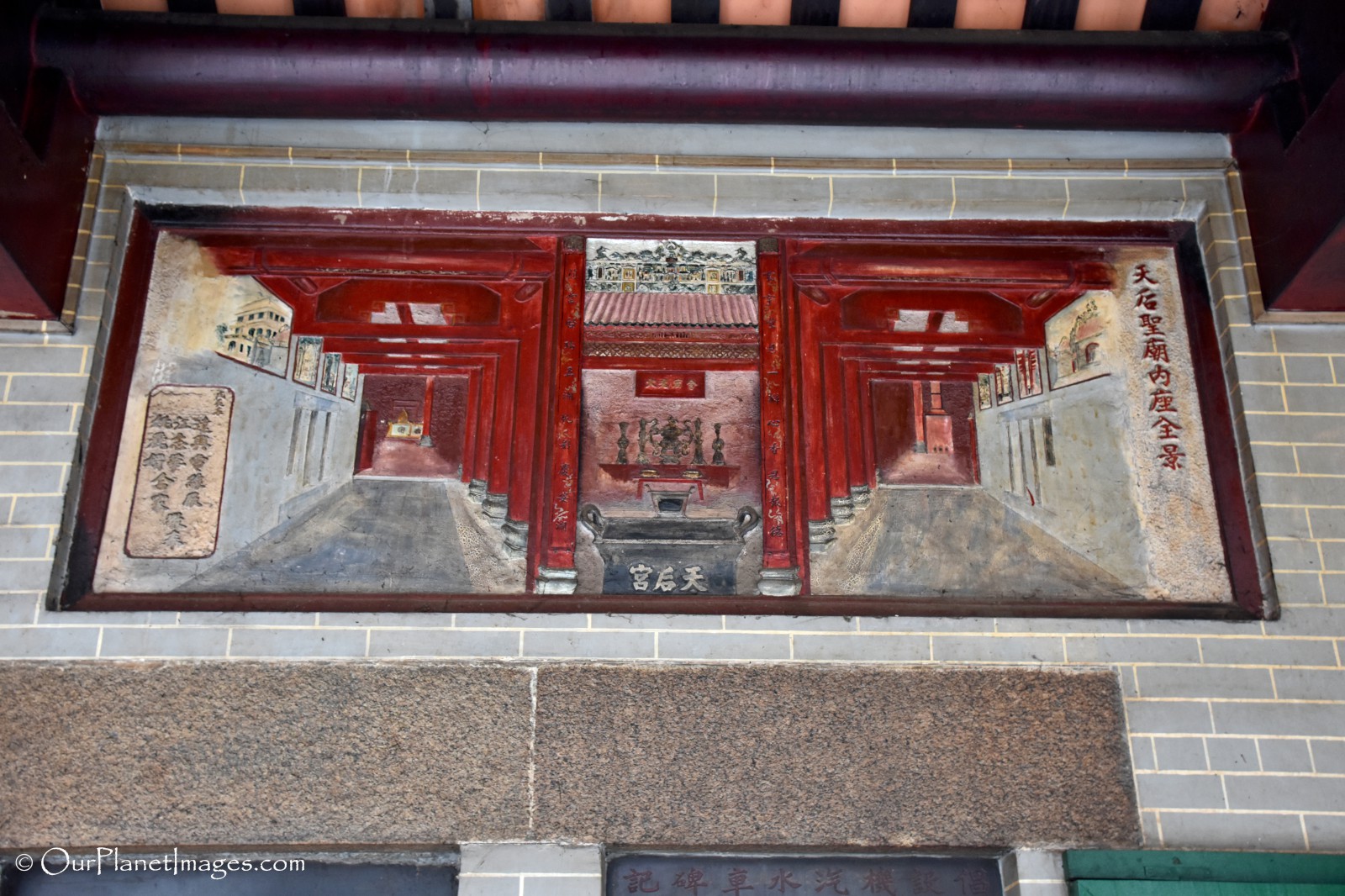
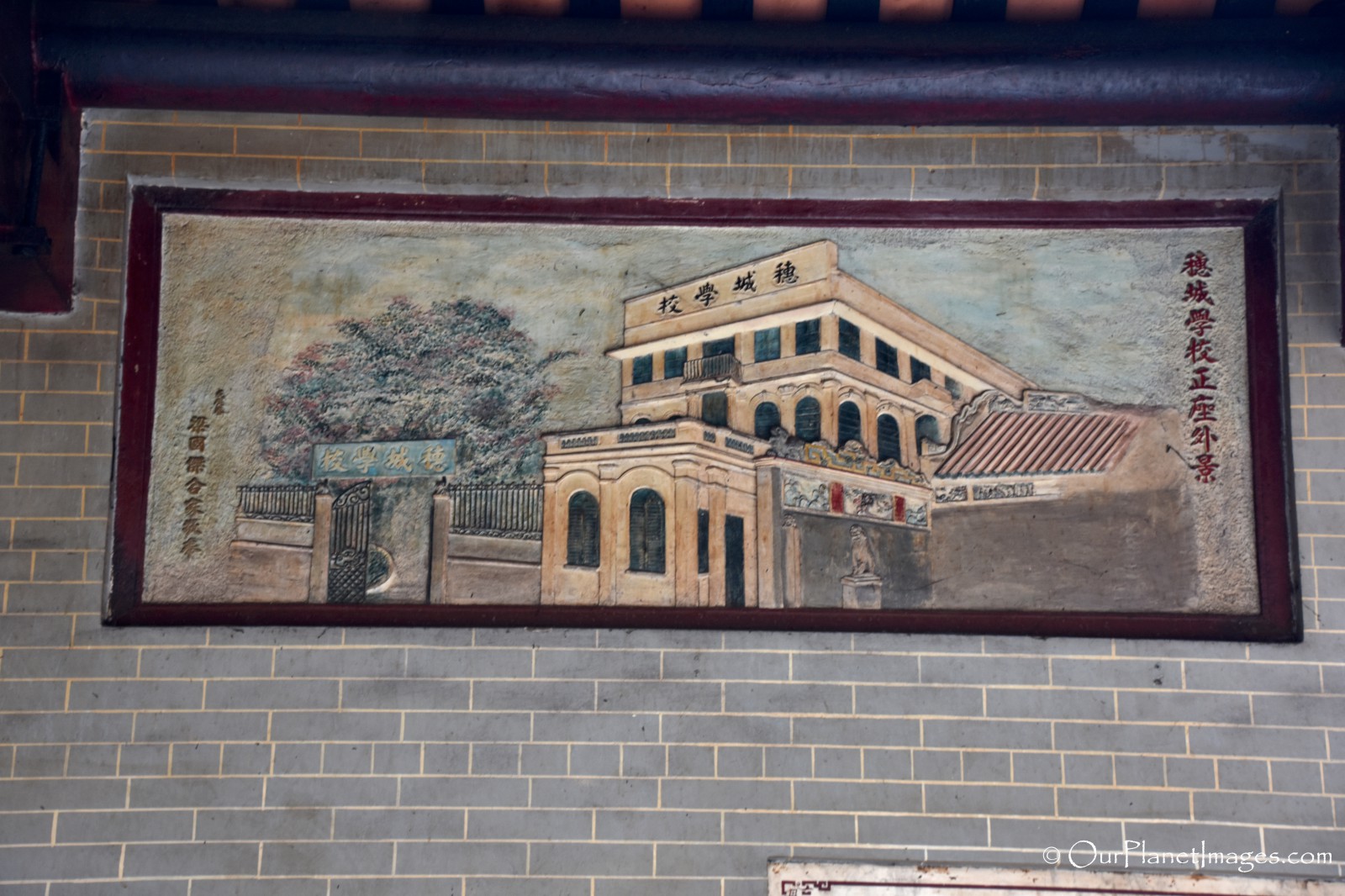
The Dust on My Shoes
The Thien Hau Pagoda is small but it has some interesting features. The incense coils and the pink donation slips are both features that I have never seen in other Asian religious place. In addition to being unique, the grouping of the incense coils and donation slips create a dramatic effect.
The outside of the pagoda is modest and can easily be overlooked as a religious place of worship. On the inside, the pagoda has the feeling of being over 200 years old and many of the artifacts look like they could be much older.
Similar to most Asian religious places, the pagoda is a peaceful place where people come to pray for blessings for their families and loved ones.
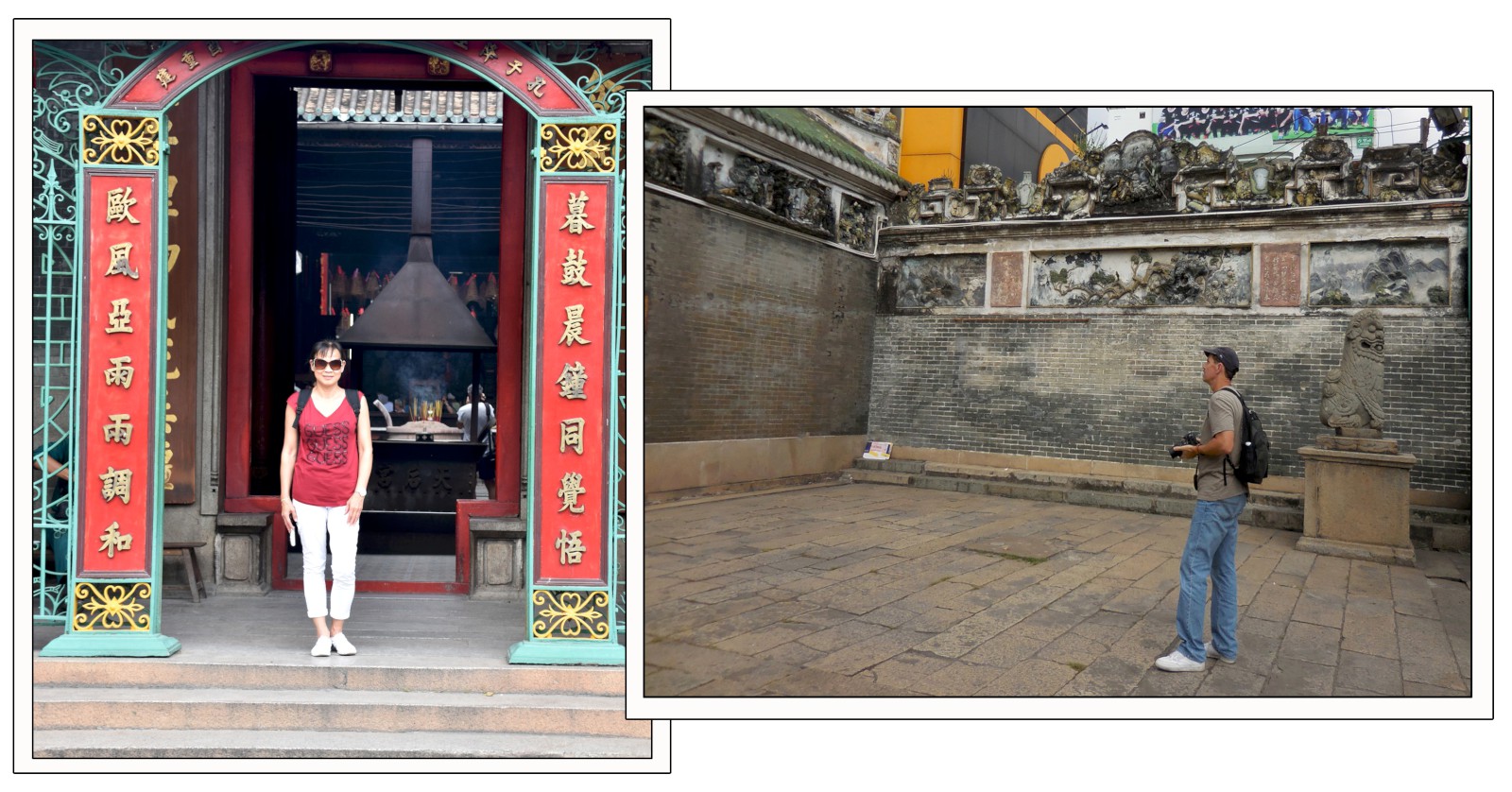
I always learn about other cultures ideas when I visit religious places during my travels. Don’t be afraid to visit religious places just because you may not know much about the religion.
